Marcu Taylor's Blog, page 12
February 28, 2019
10 Effective Ways to Generate Inbound Sales Leads
Generating enough inbound sales leads to make your marketing campaigns profitable can feel like an uphill battle at times. We know what it’s like because we’ve been there ourselves and that sense of being overwhelmed by too many different strategies and variables to test is something every successful marketing team has to go through.
After years of trial and error, we found the right formula and the truth is it all comes down to getting the bare essentials spot on.
In this article, we’ve got ten proven methods for generating inbound sales and, once you master these strategies, they’ll keep working their magic for you with relatively little maintenance.
#1: Turn your blog into a valuable resource

According to HubSpot’s State of Inbound 2018 report, 61% of marketers say blogging is their top inbound marketing priority while another 61% say generating traffic and leads is their biggest ongoing challenge.
Meanwhile, a separate (and more comprehensive) study from Ahrefs finds that 91% of content published online gets absolutely no traffic whatsoever from Google.
No wonder traffic and leads are a major concern for marketers – but what’s going on here?
According to the Ahrefs study, there are two main reasons content isn’t getting traffic:
No backlinks: Backlinks are one of the most important ranking factors in Google’s algorithm and no links mean you’re probably not even going to be seen in the SERPs.Not enough search potential: Creating content that people aren’t looking for cuts you right out of the search process.
Essentially, for your blog to become a genuine inbound lead generation tool, you have to turn it into a valuable online resource for your target audiences. You need to know what challenges they’re facing (business management, purchase decisions, work-life balance – whatever) and aim to create the best online resource for their needs.
This is what it takes to be in the 9% club that’s producing content people actually engage with – the kind of content that generates inbound sales leads.
#2: Create evergreen email signup content
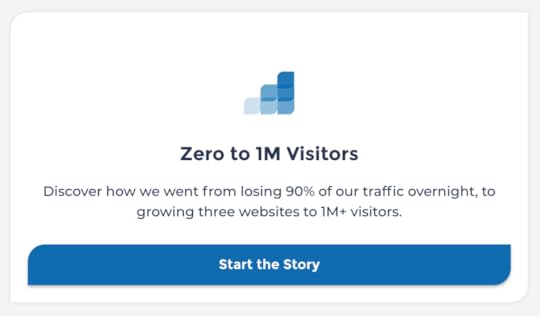 Evergreen content just keeps on generating leads for us at Venture Harbour and it only requires some minimal updating every now and then
Evergreen content just keeps on generating leads for us at Venture Harbour and it only requires some minimal updating every now and thenWith your blog pumping out highly-valuable content on a regular basis, you’re going to take this one step further and create in-depth evergreen content that offers some of the best insights in your industry.
This really needs to be cutting-edge content with headlines people are going to find hard to resist.
Ideally, this content needs to be so good people are almost willing to pay for it. Except you’re going to give it to them for free – all they have to do is download it and hand over their email address.
#3: Promote your best content on social media (organic and paid)
Now that you’re producing the right kind of blog and evergreen email content, it’s time to maximise your reach by promoting them on social media.
For the best results, you’re going to want a mix of organic and paid social strategies here and the precise approach depends on which networks you’re advertising on.
 It’s difficult to get reach with organic content Facebook these days
It’s difficult to get reach with organic content Facebook these daysFor example, it’s very difficult to generate traffic from Facebook without paying for ads these days whereas Twitter is still a strong tool for reaching wider audiences organically. However, ads on Twitter are quite pricey and Facebook’s ad targeting options are on another level.
So, in this case, you would prioritise your paid efforts on Facebook and use Twitter to reach wider audiences organically. You’ll still want to do the organic essentials on Facebook – post your content, engage with relevant pages and groups, etc.
Just understand you’ll need to pay for ads to get the reach you need.
#4: Tap into audiences from other sites
By now you should be used to publishing industry-leading content and you’ve got an entire blog page filled with the stuff to prove it. So, now you can reach out to industry-leading online publications and offer to write content for them.
This gives you exposure to entirely new audiences with the same kind of interests as the people you want to be generating leads from. Get you brand seen, show them what sets you apart from other companies in your niche and give these people a reason to find out more about your brand.
#5: Get leads from people who are ready to buy now with PPC
All of the content-driven strategies we’ve looked at so far are great ways to generate consistent inbound sales leads but it’s going to take time to implement them – namely creating the content you need and getting it to rank well in search.
Another thing you’ll find with content-driven inbound strategies is that you’re mostly generating leads from people with a strong interest in your products or services but they’re not quite ready to buy yet.
You still have to nurture them along the buying process – and this will be the case for the majority of your leads.
However, there is a much smaller (and highly profitable) group of people who have already decided they want what you’re selling; they just haven’t decided where they’re going to buy it from yet.

These are the people to turn to Google with search terms like “best email marketing software for large retailers”, “top PPC agencies in Manchester” or “emergency plumber near me Sunday”.
These are people who are ready to buy and Google Ads allows you to get your brand seen by these people at the crucial moment.
#6: Reach out to visitors who slip away with remarketing

While Google Ads is a great way to capture inbound sales leads form people who are ready to buy now, not everyone is going to pay up right away. Some people are going to get cold feet, maybe head back to the results page and check out the competition.
No need to panic, though.
With remarketing, you can keep reaching out to these prospects and keep them on-board with your brand. You’ve already paid for these leads as soon as they click your ad and you know they’ve got a string interest in your offer – so give them the extra incentive to come back to your site and complete the deal.
Take a look at our article on 10 ways to use remarketing for B2B lead generation for more ideas.
#7: Speak at industry events
One of the most effective inbound lead generations is still getting out there are meeting people in the real world. By speaking at industry events, you can establish yourself as a true industry leader – someone people literally pay to listen to.
Here’s the thing, though. As Venture Harbour CEO Marcus Taylor found out after speaking at every event he could between 2012 and 2015: “speaking at big marketing conferences is mostly ineffective”.

“First of all, there are too many competitors pitching for the prospect’s attention. It’s like trying to promote your book in a book store: Unless you have something truly exceptional to say, you’re soon forgotten.”
“The bigger problem, though, is that most of the audience assumes that you’ll be busy after your talk – so relatively few people come up to speak to you.”
Instead of speaking at events like TEDxMelbourne, it was significantly smaller events with 50-100 people that resulted in higher volumes of genuine leads.
So you don’t need to be talking at TED conferences to generate face-to-face inbound sales leads – quite the opposite, in fact.
#8: Maximise inbound lead generation with multi-step forms
One of the biggest barriers to inbound lead generation is turning website visitors into concrete leads you can work with. You need a channel where you can consistently reach out to these people, address their needs as they change and guide them towards the purchase.
Email marketing is the only channel that really allows you to do this and converting traffic into email signups is crucial to your inbound efforts.
Luckily, you’ve already got all of that email signup content but you still need to overcome the fact average conversion rates are roughly 2.35% for most brands.
You’re going to settle for average, though.
Instead, you’re going to work your page content and CTAs to get people excited about your offer and then you’re going to use multi-forms to boost conversion rates by up to 300%.

We use Leadformly‘s multistep forms to reduce form friction, increase incentive and segment our leads – not only increasing our conversion rates but also the quality of the leads we generate.
#9: Automate your inbound sales strategies
Now that your inbound lead generation strategies are getting results, you want to automate as much of each process as you can. This will reduce the manual workload of your wider inbound marketing strategy and multiply the amount of leads you’re able to generate.

One of the most effective inbound lead sources is our automated webinar strategy and it’s a fully automated system that captures leads for us while we spend out time on other things.
You can find out how to do the same by reading our ultimate guide to automated evergreen webinars.
You can also automate most of your email marketing strategy, technical SEO reporting, lead segmentation and much of your social media activity – plus a whole bunch of menial tasks that slow you down on a daily basis (eg: automating quotes and proposals).
Automate each of these processes and your lead generation results will skyrocket.
There is one other thing you’re going to need to automate, though.
#10: Automate your sales process so you can handle more leads
With your inbound lead generation strategy bringing in more prospects than you ever thought possible, the only problem now is how you’re going to physically deal with all of those leads.
Essentially, you have two options: build a bigger sales team to handle the influx or automate your sales process so your existing team can still manage everything – the latter of which is exponentially more cost-effective.
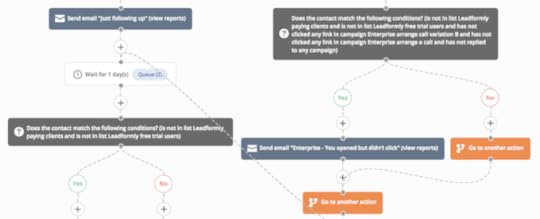
We use ActiveCampaign to automate our sales process from the moment users submit their email address, allowing us to nurture them along the sales process without any (or minimal) manual input.
Our sales team only needs to get involved when a lead drops outside of our automation processes, fails to respond or requires human input for any reason.
Without this automated strategy, we simply wouldn’t be able to handle the surge in leads we experienced after implementing the previous inbound lead generation strategies mentioned in this article.
How many of these strategies are working for you?
At this stage, you might be thinking to yourself we’ve already got a great blog and it’s not bringing in enough leads or we’ve tried paid advertising and it’s too expensive.
I get it; these things are difficult. But if you’re blog isn’t generating enough leads it ins’t all that great and, if your paid advertising strategy was too expensive, you didn’t put enough time into optimising your campaigns to get results.
If you’ve tried these strategies before and they haven’t worked for you, give them another go and put the time and effort into getting the basics right (great content, compelling ads, etc.). And, if you haven’t tried any of these strategies, then now is the time to implement them into your marketing workflow.
The post 10 Effective Ways to Generate Inbound Sales Leads appeared first on Venture Harbour.
February 20, 2019
Salesforce Review: Where it shines (and where it’s quite overrated)
Salesforce is the market leader in customer relationship management (CRM) software, so this is almost certainly going to be one of the first names you come across – and, quite possibly, the first CRM you consider trying out.
It was certainly one of the first ones we tried here at Venture Harbour.
Salesforce is a great CRM platform but we know from our own experience that it’s not for every business. So this is going to be the focus of our attention in this review: helping you decide whether Salesforce is the CRM for you or not.
Salesforce pros and cons

First, to give you an idea of what’s coming up in this review and a few clues about Salesforce’s strengths and weaknesses, here are the pros and cons we encountered while using the software here at Venture Harbour.
Salesforce pros
Incredibly powerful CRM platformYou can add/remove features to suit your needsAs the most popular CRM platform, it’s easy to find sales reps who know how to use the software
Salesforce cons
ExpensiveYou have to pay for add-ons to get the most out of the softwareConfiguration and setup is complex and time-consumingCluttered interface makes navigation and simple tasks unnecessarily complexThe learning curve never seems to endCustomer support has a poor reputation
In terms of features, there’s not much to complain about when it comes to Salesforce. Just about every feature you could need from a CRM platform is there and you can add/delete features to suit your business needs.
Where Salesforce let us down was in the pricing and usability department – and, unfortunately, the problems begin as soon as you start setting up the system. However, we were willing to accept that a complex system can take time to set up and this by itself wasn’t going to stop us from using Salesforce as our CRM.
Unfortunately, the dealbreaker for us was the day-to-day use of the platform which manages to make even simple tasks frustratingly difficult to accomplish. It just feels like every action takes 4-5 clicks to complete when they should be one or a few clicks away.
So that gives you an idea of what we liked and disliked about Salesforce so let’s take a look a the key features you can expect from Salesforce and how much it’s going to cost you.
How much does Salesforce really cost

Salesforce pricing is listed on the company’s website and, at a glance, those prices look very affordible.
Keep in mind those prices are per user, per month and you’ll be charged a lump sum annually. You’ll also have to pay for implementing the system and any customisation you require – plus the additional cost of any plugins.
Reality check: Salesforce is going to cost you at least $5,000 for a single user in the first year and you could be paying up to £50,000 per year for a relatively small team.
Salesforce implementation can require anywhere from $5,000 to well over $80,000. The investment a company makes in the implementation is a function of several factors.
Ranger Louis, Engineer at CRM Rangers | Salesforce Implementation & Special Ops (Quora)
The factors Ranger Louis mentions are:
The size of your organization
This can be measured by either the number of users, number of customers or number of transactions that you handle. Typically, bigger operations/organizations will require larger investments in the implementation of Salesforce.
The industry you operate in
Are you an online retailer? A day spa? A professional blogger? A membership-based not-for-profit organisation? Do you sell goods or services? Some industry or businesses have more complex sales pipelines than others. Some businesses require deeper customer engagement than other. Here complexity generally drives the clock.
The type & complexity of your organization
The more complex your organisation (corporate structure, hierarchy, internal procedures, business processes, etc) the more time your implementation team will need to implement Salesforce.
Your business objectives
If you are just looking to track customer in a cloud CRM then implementation will command a lower investment. But if you want to create a personalized customer experience or offer efficient customer service or build a positive customer-advocate community around your brand … your implementation project will take much longer.
You can also expect to pay more if you’re migrating over from another CRM, need to integrate Salesforce with other applications (you do) and for any training beyond the basic free offering from Salesforce (you probably will).
Is Salesforce too expensive?
If you’re an enterprise business with the budget available to pay for Salesforce to implement everything the way you need, then the final price may be a worthy investment.
However, we have found we can get 90% of the features available from enterprise CRM platforms like Salesforce for a fraction of the price (we’ve been using ActiveCampaign Enterprise for almost five years now and we’re very happy with it).
What can you do with Salesforce?

Salesforce features are broken into three main categories: Sales, marketing and customer support.
With sales and marketing automation, you’ll be able to handle a higher volume of leads and turn more of them into customers without needing to increase the size/cost of your sales team.
Meanwhile, the customer support features are designed to help you keep your customers happy after the initial purchase and turn more of them into repeat buyers, positive reviews and brand loyalists.
Sales features
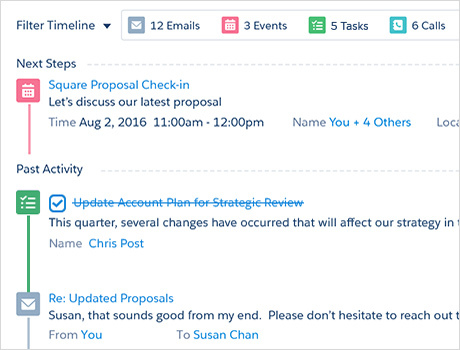
Opportunity & pipeline management: Manage sales opportunities through their entire lifecycle – from lead to order confirmation. Manage pipelines by individual sales reps, teams, regions or company-wide, tracking stages, values and probabilities of closure.Partner Relationship Management (PRM): Manage partners by tracking channel partner leads and sales opps.Task / Activity Management: Track and manage tasks/activities. Assign due dates, set priorities, integrate tasks with calendar apps and manage schedules.Contact & Account Management: Store and access contact information to improve the quality of communications and marketing messages. Track interactions for an overview of their customer journey, giving your sales reps access to all relevant info about each contact and account.Customer Contract Management: Manage customer contracts, including negotiations, defining terms and conditions in contracts and ensure compliance is met. Any changes made can be agreed and documented in one place.Product & Price List Management: Create and manage product lists with pricing, including custom prices and discounts for customers where needed.Quote & Order Management: Quickly create quotes for customers, based on your product information and pricing. Sales reps can also process orders when all the required info is present – or assign orders to the relevant department for completion.
Marketing features

Email marketing: Send emails to contacts in bulk, create segmented lists and customise content based on where each contact is in the sales cycle and your previous interactions with them.Campaign Management: Manage your multi-channel marketing strategies, assign statuses to contacts and deploy messages based on their progress through the sales cycle.Lead management: Define your lead management processes and allow reps to guide contacts along the sales cycle, tracking their progress along the way and reaching out with the relevant message to guide them towards the next stage.Marketing ROI Analytics: Make sure your marketing efforts are profitable, set ROI targets and track your performance.
Customer support features
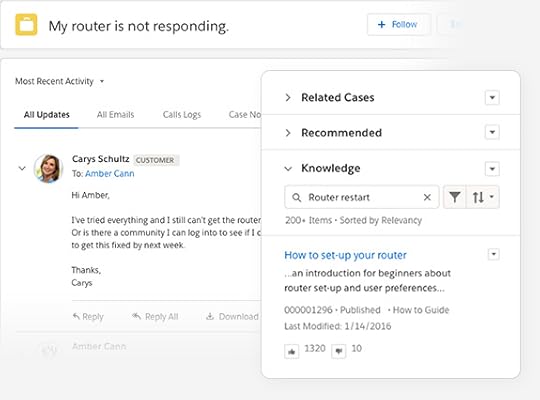
Call Centre Features: Call recording, analytics, workforce management, call script management, and compliance management.Case management: Tracks issues/help requests reported by customers through the resolution process.Customer Support Portal: Provides your customers with a place where they can submit service issues, technical problems, place orders, view order histories and contact your support team.Knowledge Base: An information repository where your customers can access all kinds of information about your products, services and other info they need to get the best customer experience.Support Analytics: Measure the performance of your customer support system and spot opportunities for improvement.
You also get a wealth of reporting and analytics features in Salesforce, including:
Dashboards: Data visualisations across multiple dashboards, giving you detailed insights into your sales performance in a visual format that makes your data easy to understand.Forecasting: View projections of sales revenue, based on historical data and analysis of market surveys, trends and sales estimates.Reporting: Create and view reports across your sales, marketing and customer support efforts for an overview of your sales performance. Segment your reports to hone in on specific actions and performance indicators.
Salesforce also gives you dedicated features for eCommerce, managing online communities, collaboration and solutions for specific industries.
You can get the full list of Salesforce features its website and one of the platform’s biggest selling points is that you can add/remove the features you need. Either way, whatever you’re looking for in terms of CRM features, Salesforce is has got it (and probably a whole bunch more).
Salesforce verdict
Salesforce is one of the most comprehensive CRM platforms on the market and if your business demands a very specific set of sales features, it might be one of the few or only tools that provides everything you need in a single piece of software.
You really do have to pay for the privilege, though, and the real problem we found with Salesforce is that the convenience of having a single CRM and automation suite is negated by its complex setup process and questionable interface design.
For us, it simply takes too long to make anything happen on Salesforce and this left us looking for a more basic solution – one that simplified our sales process, rather than adding complexity to it.
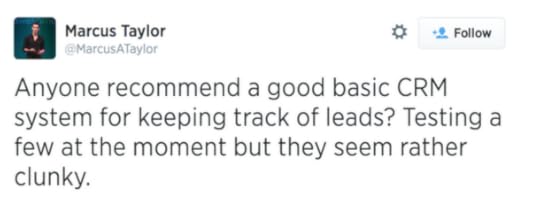
After trialling Salesforce and various other enterprise CRMs, it became clear that we couldn’t tolerate a platform that makes simple tasks more complex. We wanted to update contact statuses, assign tasks and navigate reports with single clicks, not multiple.
We wanted a piece of software that was easy to navigate users new and old, so everything is where it should be when we need it and new members of our sales team could get to work without weeks of training.
Salesforce has all the features we needed (and then some) but they’re just not packaged in a piece of software that delivers the usability and flexibility we needed. Unfortunately, this meant we found it was holding back our sale performance more than it was enhancing it.
The manual workload involved in using Salesforce (and most of the CRMs we tried outweighed the benefits).
Now, for large businesses with thousands or millions of leads to manage and hundreds of sales team members, Salesforce will save you more time than it costs – and this is the kind of business it’s really designed for.
For smaller sales teams who really need to minimise the manual workload and create the most efficient sales process, Salesforce is going to be a frustrating (and expensive) experience, though.
As for small businesses on a tight budget, getting the features you need from Salesforce quickly becomes expensive.
Conclusion: Salesforce is great for features and tailoring a platform to meet your needs but the setup process can be painful and using the software on day-to-day basis is frustrating.
If usability is something you look for in sales and marketing tools, Salesforce feels like it gets in the way of things more than it empowers you to do more, which is especially difficult to accept at this price point.
The post Salesforce Review: Where it shines (and where it’s quite overrated) appeared first on Venture Harbour.
January 30, 2019
10 Best Time Management & Productivity Apps of 2019
“Great companies obsess over productivity, not efficiency,” Michael Mankins wrote for Harvard Business Review (HBR) in March 2017.
Mankins is a Brain & Company leader and partner, as well as a coauthor of Time, Talent, Energy: Overcome Organizational Drag and Unleash Your Team’s Productive Power.
As he says in his HBR article, “Our research indicates that the average company loses more than 20% of its productive capacity — more than a day each week — to what we call “organizational drag [sic].”

Organisational drag is any process that consumes valuable time and prevents people from getting things done – ie: productivity killers. The best companies are the ones that identify issues getting in the way of productivity and either create more efficient processes or remov them altogether.
The same thing applies to individual staff members, entrepreneurs, freelancers and anyone who cares about making the most of every minute and [insert currency] they spend.
Whether you’re working solo or as part of a team, you need the right tools to identify and overcome productivity – so, in this article, we’ve got 10 of the best time management and productivity apps to help you get more done.
Top 10 time management & productivity apps
In this article, I’m going to run you through my pick of the top 10 time management and productivity apps that will help you get more done every hour of the working day.
Productivity tools come in many different forms and they often take a different approach to improving your workflow. So I’m not just going to reel off ten apps and make out all your problems are solved.
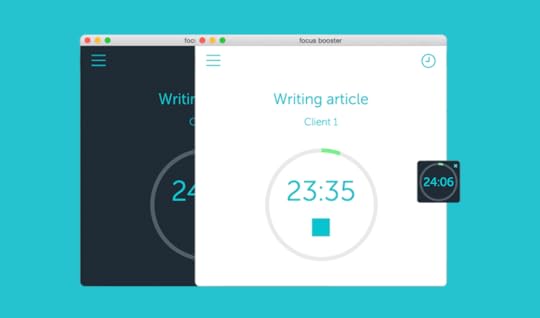 The focus booster app is designed around the Pomodoro Technique – popular productivity strategy
The focus booster app is designed around the Pomodoro Technique – popular productivity strategyAll of these apps approach productivity in a different way, solving different types of problems. Most of them are great for individuals while teams are probably going to want to choose a different combination of tools. So, once I’ve introduced each of these apps, I’m going to spend the second half of this article comparing them to help you choose the right toolkit for your needs.
Before I start, here are time management and productivity apps you’ll be reading about today:
RescueTimeFocus BoosterTogglTrelloBe Focused TimerLoop – Habit TrackerForest AppTodoistWunderlistPocket
Note, these aren’t in any particular order so I’m not saying RescueTime is the best productivity app around. All of these apps are great at what they do and my aim here is to help you get a better understanding of what they do differently and what you need from productivity tools in general.
Here’s the first app I want to show you today.
#1: RescueTime (Windows, Mac, iOS, Android)
Free version; Premium version $9/mo or $72/year
RescueTime is a productivity app that runs securely in the background of your computer or mobile device, tracking the time you spend on different applications and websites.

The app then compiles reports of what you’re really doing with your time. The idea is to spot apps and sites that you’re wasting time on and then block them to become more productive.
Key features
Activity tracking: See how much time you’re spending in apps/on websites to measure productivity.Website and app blocking: Block out the apps and website stealing your attention so you can get more done.Goals: Set productivity targets and use RescueTime’s reporting to see how well you’re doing.Alarms: Set alarms to warn you once you’ve spent more than your allotted time using an app/site.
If you’re spending too much time on social media or catching up on the news in the morning is taking valuable time away from your working day, RescueTime is one app you definitely want to look at.
Take a look at our list of top 10 website and app blockers for some of the best alternatives to RescueTime.
#2: focus booster (Windows, Mac, iOS, Android)
Free, $2.99/mo or $4.99/mo
focus booster is “designed to make you do more” with a cross-platform app built around the Pomodoro Technique – a popular time management concept. The idea is to work in sessions of 25 minutes and then take a five-minute break.
The key thing is to stay focused for those 25 minutes and then give your ind the break it needs before getting back to work.

This is the principle behind focus booster, which times your pomodoro sessions and helps you get into the habit of being more productive.
Key features
Session times: Work for timed 25-minute sessions and five-minute breaks.Mini timer: A miny timer on screen helps you stay on track.Save sessions: Save sessions when you get unavoidable distractions.Timesheets: Instant and manual times to log your progress.Reports: See where you spent your time and look for any distractions holding you back.
If you don’t want to go as far as blocking apps and websites but you need a gentle nudge into a more productive workflow, focus booster is an interesting option.
#3: Toggl (Windows, Mac, iOS, Android, Chrome, Firefox)
$9/mo, $18/mo or custom pricing for enterprise businesses
Toggl is a simple time tracker with powerful reporting that keeps track of how much time you’re spending on tasks. That’s pretty much it but the idea is to help you create a more profitable business, knowing you’re charging for all the time spent on projects – or not spending more time than you’ve quoted for.

For teams, it’s also a great tool for comparing the amount of time people spend on tasks, finding out what individuals are best at and knowing who can get you things done under pressure.
Key features
Time tracking: See how much time you (or others) are taking to get things done.Boost profits: Check you’re charging enough for the time it takes to complete projects.Reports: See how productive you’re being and how profitable your time with Toggl reports.Cross-platform: Toggl’s wonderfully designed apps work across just about every operating system and online so you can access it wherever you need, whenever you need it.
Toggl is an incredibly simple app but it does what it’s designed to do perfectly. Sometimes more features simply create more distractions and that’s counteractive for a productivity app – s problem you definitely won’t get with Toggl.
#4: Trello (Windows, Mac, iOS, Android & web)
Free, $9.99/mo or $20.83/mo
Trello is a productivity app for teams that makes it easier to collaborate on projects and ensure everything gets done. The app is designed around the idea of creating and grouping cards for tasks, which each member of your team can interact with.

This allows you to create projects, add new tasks as they emerge, assign tasks to members, set deadlines, add attachments, make comments and prioritise tasks.
And, of course, mark tasks as completed when they’re done.
Key features
Project management: Trello helps you keep projects on track while giving you the freedom to make changes as new problems and solutions arise.Task management: Create tasks, set deadlines, assign them to members, update requirements and make changes as you need.Unlimited invitations: Invite as many people to your board as you need to get the job done – all for free.Discussions: Speak with team members in the app, write members’ names to include them in the conversation and add attachments as you need.Real-time updates: All changes are made in real-time so everyone on your team knows how things are progressing.Cross-platform: Team members can access and update Trello boards from anywhere.Project completion: Complete projects faster without any tasks being missed or any confusion getting in the way of progress.
Trello is an amazing application that simplifies the complex tasks of teams working on the same project.
#5: Be Focused (Mac, iOS)
$4.99 for Mac, $1.99 for iOS
Be Focused is a minimal productivity app for Mac and iOS that also takes heavy influence from the Pomodoro Technique. If you read our description of focus booster earlier in this article, you have a good idea of what you expect.

Be Focused will have you working in short bursts of productive 25-minute sessions and then taking a short break. Except, Be Focused is more liberal than focus booster’s app, giving you full customisation over the duration of your sessions and breaks.
Key features
Manage tasks: Set timed work sessions and breaks for tasks.Goal tracking: See how well you’re doing at hitting targets.Reports: See how productive your days, weeks and months are with Be Focused reports.
If you’re an Apple-only user, Be Focused offers a lot of productivity tool for a modest one-time payment.
#6: Loop – Habit Tracker (Android)
Free
This time we’ve got an Android-only productivity app but Loop takes a very different approach to most tools you’ll come across in this category. Instead of trying to keep you away from bad habits getting in the way of work and life, Loop aims to help you spend more of your time forming beneficial habits.

it could be spending more time on neglected admin tasks, catching up on your ever-growing inbox of emails or spending more time with the kids when you’re not working. Whatever you want to be doing more of, Focus will help you improve your habits.
Key features
Develop better habits: Set targets for the things you want to spend more time doing.Schedule: Set specific times and dates or weekly schedules to make your goals more achievable.Habit score: See how you’re doing with individual habits or overall with your habit score.Reporting: Detailed graphs and statistics to keep track of your habits and monitor performance over time.Reminders: Set reminders to keep you in check in moments of weakness.
With productivity apps, there’s a lot of focus on the things you shouldn’t be doing but Loop takes the opposite approach and puts the focus on what you could be doing better.
#7: Forest (iOS, Android)
Free
Forest is easily the quirkiest productivity app in our list today. It’s only available on iOS and Android but there’s beautiful irony in the fact it’s designed to stop you spending so much time on your phone and/or tablet.

Forest essentially gamifies downtime away from your mobile devices. When you want to focus, you plant a “tree” and the more time you spend away from your phone/tablet, the more it grows.
Leave the app and your tree dies :(
Spend enough time away from your phone and you can grow an entire forest. Best of all, you can earn virtual coins by staying focused on your tasks and use these to grow real-life trees through the Forest app.
Key features
Productivity: Spend less time your on your mobile devices and see the progress in the form of digital trees.Gamification: Forest adds a little bit of fun into the chase for better productivity.Grow actual trees: No other app in this list is going to help you plant actual real-life trees where they’re needed most.
Forest not only injects a little bit of fun into productivity it also helps you make the world a better place while you’re improving your workflow.
#8: Todoist (Windows, Mac, iOS, Android, Chrome, Safari, Firefox)
Free, $3/mo or $5/mo
Todoist is a task management tool that promises to turn complex to-do lists into something easily manageable. In many ways, it;s like a Trello for individuals (and without the cards), helping you keep track of your own tasks and make sure nothing gets forgotten.

You can create and organise tasks, set and change deadlines, prioritise tasks, set project goals and keep track of progress with the apps measurement and reporting features.
Key features
Task management: A slick, feature-rich interface that makes it easy to create and manage tasks – no matter how long your to-do list may be.Prioritise tasks: Get the most important things done first by prioritising tasks.Project goals: Set project goals and make sure your on track throughout.Reports: Keep track of your progress with Todoist’s measurement and reporting features.
If you’re struggling to keep on top of your personal to-do list, Todoist offers a slick, cross-platform interface that makes it quick and easy to manage tasks.
#9: Wunderlist (Windows, Mac, iOS, Android, Chrome, Safari)
Free or $4.99 per user
Wunderlist is a task management app with all kinds of advanced features. While Trello is designed for teams and Todoist is designed for individuals, Wunderlist is designed for both and it feels very much like a Trello alternative designed around to-do lists, rather than cards.

Instead of cards, you create lists and group them into folders, which every member of your team (if you have one) can access and edit accordingly.
Key features
To-do lists: Create to-do lists for individuals or teams and group them into folders for larger tasks or projects.Task management: Set deadlines, assign tasks, set reminders and add comments or notes.
Much like Trello, Wunderlist is a seriously powerful platform that offers a lot of productivity features for free or a relatively small subscription fee. See which one you prefer.
#10: Pocket (Windows, mac, iOS, Android & web)
Free
Pocket is a wonderfully simple productivity app that simply lets you save web pages for reading later. In truth, it’s little more than a bookmarking tool turned into an application but it really makes a difference to how you work.

When you come across something interesting or useful, but you don’t have time to read it now, Pocket is there for you. Simply save the page (URL-based), assign a category if you want, and you’ll build a collection of resources in your Pocket account.
The app essentially turns into a feed of things you actually want/need to read, learn or use for later.
Key features
Save for later: Save web pages for reading when you have time or need them.
Pocket may only have one feature but its one of the few productivity app I use every day and it costs me absolutely nothing.
How to choose the right productivity apps for you
As you can see, all of the productivity apps we’ve looked at in this article vary greatly. While some of them have similarities, they all of have more differences than things in common.
One the one hand, this is a good thing because we all have different needs when it comes to being productive.
The downside is, I can’t turn around and say app x or y is the productivity app is better than another. However, I can help you make the choice for yourself by comparing them in the following ways:
Best apps for productivity features: We compare the productivity features of each app to help you get a better idea of what each one has to offer.Best apps for cross-platformability: Check the apps you like the look of are available on the devices, systems and platforms you use.Best apps for user experience: Poor user experiences make for poor productivity – so we compare the usability of each app.Best value for money: We calculate the value for money of each app by comparing features vs price.Best apps for teams: We look at the best productivity apps for teams that need to collaborate seamlessly.
This will hopefully tell you which combination of apps are going to help you get more done.
Best apps for productivity features
First, let’s take a look at the key features each app has to offer so you can get a clearer idea of what they do/don’t have to offer.
Tool
Activity tracking
Time sessions
Timesheets
Project management
Task management
Reports
RescueTime
✔
✔
✔
focus booster
✔
✔
✔
Toggl
✔
✔
✔
Basic
Basic
✔
Trello
Extensive
Extensive
✔
Be Focused
✔
Basic
✔
Loop
✔
Basic
✔
Forest
✔
Todoist
Solid
Solid
✔
Wunderlist
Extensive
Extensive
Of course, there are some features unique to certain apps, such as RescueTime’s web and app blocking, Trello’s instant messaging and Pocket’s web page saving (pretty much it only feature), but this gives you a general overview of how these apps compare.
Some are more centred around timing your activity and help you waste less time while others are more geared towards project and task management.
It’s also worth taking a look at the integrations available with each app because you can combine Trello with Toggl to add time tracking to your project management tool, for example.
Best apps for cross-platformability
Next up, let’s take a look at which platforms each of these apps are available on. In an ideal world, you want any productivity app to be accessible on every device you use – even if this means using a web app on certain devices.
Tool
Desktop
Mobile
Web app
RescueTime
Windows, Mac
iOS, Android
focus booster
Windows, Mac
iOS, Android
Toggl
Windows, Mac
iOS, Android
Yes
Trello
Windows, Mac
iOS, Android
Yes
Be Focused
Mac
iOS
Loop
Android
Forest
iOS, Android
Todoist
Windows, Mac
iOS, Android
Yes
Wunderlist
Windows, Mac
iOS, Android
Yes
Windows, Mac
iOS, Android
Yes
The good news is most of these apps are available across Windows, Mac, iOS and Android while half of them also have a web app, giving you browser access on any device.
Best apps for user experience
Productivity tools are supposed to remove distractions and help you get more done – not make life more difficult for you. This means usability is paramount and, while all of the apps in this list offer solid user experiences, there are a few that still stand out.
Before I explain why, here are the top three apps I’m recommending, based on user experience:
TogglTrelloWunderlist
I’ll take a closer look at each of these in a moment but, first, I’ll explain what I’ve based this decision on – because user experience is a subjective thing.
Here’s the criteria I’ve used to make the call:
Visual design: Points awarded for clean, minimal designs that make it easy to understand and use the app.Navigation: Features always being within a few clicks and navigation that’s easy to understand.Features vs usability: More features are great but only if they don’t add unnecessary complexity that’s going to kill productivity.Cross-platform experience: Cross-platform support and consistent experience as move between different versions.Integrations: Allow you to add features that you need, even if they’re not provided by the app itself.Documentation & support: Sometimes things just don’t work as you expect them to and this is where you need documentation and support to back you up.
Now that you what I’ve been looking for in each of these apps, let’s take a look at our top three and explain why they win the usability test.
Toggl
I can honestly say Toggl is one of the most pleasant app experiences I’ve ever had and I put a lot this down to the fact it revolves around a fairly simple function: timing how long it takes you to get tasks done.

There are a lot other features available with Toggl but everything centres around this single concept and this is reflected in the app’s architecture, navigation and overall experience.
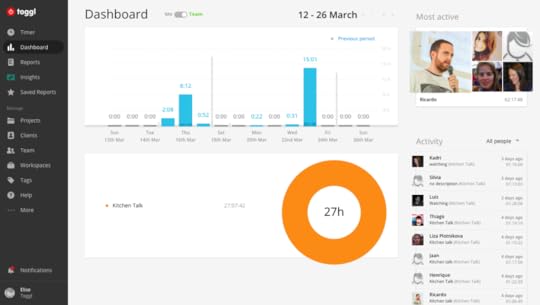
Its clean interface keeps every feature within reach and makes it easy to get around – very much like an improved version of the WordPress interface. This experience is consistent across the Toggl desktop, mobile and web apps, so you really can move between them seamlessly.
Trello
Trello isn’t quite as lean and clean as the Toggl user experience but it’s a far more complex application. When you consider everything Trello simplifies for collaborative teams, it’s an impressive example of software design and development.

The main dashboard (above) is where you can manage your profile, project boards, team members and account settings. Admittedly, the card-style project boards look a little cluttered when you first see them but it takes no time at all to get over this.

Trello makes it incredibly easy for collaborative teams to work on projects and make sure everything gets done. Adding new tasks, changing deadlines, reassigning tasks, discussing them with your team members and so much more can all be done in real-time from the same place.
Collaborative freedom made simple.
Wunderlist
Wunderlist takes the classic to-do list concept and turns it into a feature-rich productivity app for individuals and teams. As you add new tasks to your lists you can assign them to specific dates, define the duration, set them to repeat, create reminders and organise your tasks.

If you’ve ever used Google Calendar to try and arrange your schedule, you get the same kind of control over creating repeat tasks.

You also get a much better interface to work with and more freedom to view your to-do lists or check tasks by date, week or month. It’s much easier to manage, reschedule mark tasks as completed.
Best value for money
Again, value is a subjective thing so what we’re going to do here is give each app a score out of ten for three categories: cross-platformability, features and then the cost.
Free apps instantly get 10/10 score for cost while small one-off payments will get 9/10. Monthly costs are then rated down from 8/10 based on the monthly cost.
Keep in mind, I’m listing the maximum price for these apps and most of them offer a free version and/or cheaper options. I’m going with the most expensive prices purely because they give you the best of each app’s features.
I’ve marked prices with an asterisk where free or cheaper options are available.
Tool
Cross-platform
Features
Cost
Overall
RescueTime
8/10
8/10
$9/mo*
7.6/10
focus booster
8/10
6/10
$4.99/mo*
7.3/10
Toggl
10/10
9/10
$18/mo*
8.3/10
Trello
10/10
10/10
$20.83/mo*
8.3/10
Be Focused
5/10
7/10
$4.99
7/10
Loop
2/10
6/10
Free
6/10
Forest
5/10
4/10
Free
6.3/10
Todoist
10/10
7/10
$5/mo*
8/10
Wunderlist
10/10
8/10
$4.99/mo*
8.3/10
10/10
4/10
Free
8/10
The free apps that score well in cross-platformability are always going to get high scores here. An app like Pocket may only have one real feature but it’s a wonderfully designed app that you can use on every device and it costs you nothing to use.
Hard to argue with that.
In truth, all of these apps are good value for money and the more expensive options give you a lot of features for your money. Besides that, there are free and/or cheaper packages available with most of them and even the free versions of Toggl, Trello and Wunderlist are powerul tools – so be sure to check them out.
Best apps for teams
While all of the apps in this list are excellent productivity tools in their own right, they’re not all designed for teams that need to collaborate more effectively.
If that’s what you’re after, then the apps you want to focus on are:
Trello: For helping teams work on complex or long-term projects.Wunderlist or Todoist: For managing tasks and schedules.Toggl or RescueTime: For measuring productivity and reducing distractions.
Trello for collaborative teams
If you need a platform that helps teams collaborate on projects, Trello is the app for you. Every task is assigned to the relevant person, team members can work together or individually as needed and progress is updated in real-time – so no tasks are missed.

Projects can be a complex thing where requirements, workloads, new challenges and solutions can change at any time. Trello makes the unpredictable nature of team projects easier to manage.
A great feature of Trello is that you can invite unlimited people to your projects and they can access the app from anywhere. Which is ideal if you have a mix of in-house and location-independent team members.
Wunderlist or Todoist for assigning and managing tasks
While Trello is truly designed with teams in mind, Wunderlist and Todoist can be used by teams or individuals. The difference is these aren’t project management apps and they don’t have a great deal to offer when it comes to collaboration either.
This is fine because a lot of businesses don’t work on projects and tasks are often self-contained. When your system needs updating, you just want it done and if a report is due, you simply want to assign it to the right person and know it’ll be ready in time.

Wunderlist and Todoist are exceptionally good at managing these kinds of working environments, where tasks are self-contained or teams largely work individually or in smaller groups.
Toggl or RescueTime for making teams more productive
Toggl and RescueTime are neither project or task management tools. Instead, they track and time members as they work to help you understand how much time is really being spent on individual tasks.

In the case of Toggl, the idea is to make sure you’re hitting profit targets, It does this by timing tasks so you can see if they’re taking longer than expected – in which case, you can delve deeper into reports to determine whether you’ve underquoted or things aren’t getting done as quickly as they should be.
RescueTime aims to do something a little different by tracking the amount of time people spend using specific apps and websites. This reveals how much time people are wasting on social media, news sites and other distractions, which is where you can use its app and website blocking feature to remove those distractions entirely.
What’s holding your team back?
All five of these apps can improve the productivity of your team but they all solve slightly different problems. So, first, you need to determine what’s holding your team back and then choose the right tool(s) to solve your problems.
Find the toolkit that works for you
So that’s my pick of the best time management and productivity apps. I’m not suggesting you’ll find all the tools you’ll ever need in this article but I’m confident you’ll make a lot of progress by combining just a few of the options we’ve looked at today.
Creating the most productive workflow for your tastes and needs is going to take the right combination of tools and you can either use or try all of these for free.
Hopefully, I’ve helped you narrow down the list of options and figure out a little bit more about what you need/want from a productivity app. Now, it’s over to you to try out the apps you think have something to offer and find the toolkit that works for you.
The post 10 Best Time Management & Productivity Apps of 2019 appeared first on Venture Harbour.
10 Best To-Do List Apps & Day Planners to Get More Done
To-do lists have come a long way since the days of scribbling down notes on scraps of paper and later frantically shuffling through everything on your desk in search of a misplaced Post-It note.
Today, we’re blessed with entire app stores filled with digital to-do lists and day planners. No more scraps of paper or trying to decipher your own handwriting – those problems are a thing of the past.
Yet modern to-do list apps are so much more than digital notepads. You can use them to plan and manage your entire workflow, set due dates for each task and set reminders so nothing gets missed or forgotten. With some of the more complex task planning apps you can manage entire projects, multiple teams and simplify highly complex workloads.
If you’re looking to boost personal or team productivity, this is the first tool you should be adding to your kit. And to help you choose the right app for you (or your team), here are the 10 best to-do list apps and day planners available right now.
Top 10 To-Do List Apps
In this article, I’m going to start by introducing the 10 best to-do list apps and day planners I’ve used (I’ve used a lot of them) with a quick intro and overview of what they have to offer. Then, in the second part of this article, I’m going to compare them in more detail (features, price, UX, etc.) to help you choose the best app(s) for your needs.
We all work differently and require certain things from productivity apps. This is something I was very conscious of when choosing these recommendations and they’ve all got something unique to offer.
Spoiler alert: Here are the apps we’re going to be looking at today:
WunderlistTodoistnTaskAnydoTickTickThingsWeDoGoogle KeepTrelloHabitica
Some of these are simply great to-do list apps and scheduling tools. Others are more complex, offering a range of project management and productivity features – all of which will be explained throughout this article.
With so many to-do list and task management apps available these days, choosing one can be very difficult. But this is about to get a whole lot easier for you, once you’re done with this article.
Here’s your first recommendation.
#1: Wunderlist (Windows, Mac, iOS, Android, Chrome, Safari)
Free or $4.99 per user
First up, we’ve got Wunderlist and I’ve recommended this once before in our 10 best time management and productivity apps article.

When you need a truly cross-platform and feature-rich task management tool, Wunderlist is hard to beat. The platform is designed around the concept of to-do lists but there’s so much more you can do with this app.
Key features
Task planning: Create tasks or larger to-do lists, set your deadlines, prioritise the most important tasks and check them off once they’re done.Folders: Group related lists into folders to manage projects or complex tasks into manageable categories.Reminders: Set reminders to ensure tasks are never forgotten.Notifications: Get updates via push, email and in-app notifications.Collaborate: Share your lists with others and collaborate on groups tasks.Comments: Communicate with other members within the Wunderlist app for improved teamwork.
Wunderlist is a great option for individuals and entire teams who need to manage their work and personal lives.
#2: Todoist (Windows, Mac, iOS, Android, Chrome, Safari, Firefox)
Free, $3/mo or $5/month
Todoist is more geared towards individuals than entire workforces although you can group tasks and lists into projects, which might work for small teams.

Generally, though, Todoist is going to be a better option for the individual worker who’s looking for something similar to the Gmail interface combined with Google Calendar functionality.
Key features
Quick Add: Quickly create and organise your tasks in a matter of clicks with Todoists Quick Add feature.Deadlines & reminders: Set deadlines, recurring deadlines for repeat tasks and reminders to make sure you keep on top of everything.Projects & goals: Create and manage projects with sub-tasks, set goals and keep track of progress.Highlight tasks: Highlight the most important tasks with colour-coded priority levels.Reports: Keep on track of your progress with reports and earn Todoist Karma points for hitting targets.
There is a “Business” version of Todoist that offers additional features to make project management easier for teams but you’re probably going to go with another app, if that’s what you’re after.
#3: nTask (iOS, Android & web)
Free or $2.99/month
nTask says it’s “more than just a task management tool” and I can tell you that’s no word of a lie. This application is crammed full of features for task management, project management and general business running.
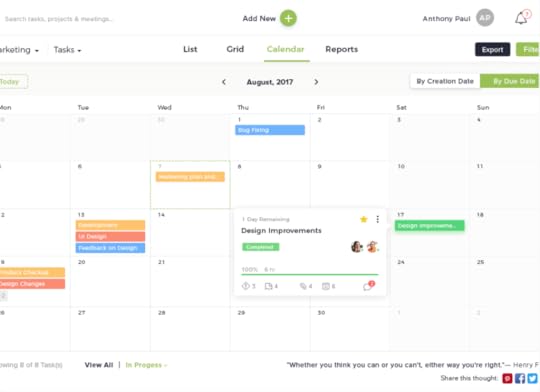
You can run nTask in the browser and its mobile app is available on iOS and Android but there are no native desktop apps for Windows or Mac. While it would be nice to see these native apps available for computers, the nTask web app functions very well.
Key features
Task management: Create checklists, schedule tasks, set deadlines, repeat tasks and set priorities.Project management: Assign tasks to team members, set project budgets and cost estimates, add lists for project risks and issues.Time tracking: Monitor how much time is being spent on tasks.Activity log: Keep track of all activities on your profile for insights on performance and productivity.Gantt charts: View progress on Gantt charts for an overview of entire projects.Manage meetings: Schedule meetings, send invitations and share minutes to everyone who needs them.
If you’re looking for more than a simple to-do list app and an all-round productivity suite, nTask will be one of the most feature-rich options you’ll find in this list of recommendations.
#4: Any.do (Windows, Mac, iOS, Android & web)
Free or $2.99/month
Unlike nTask, Any.do truly is a task management app and it doesn’t try to be anything else. It’s a wonderfully designed app, too, that’s available across all major platforms and the web app means you can access it in-browser on almost any device.

If you’re looking for a task management app that’s available on smartwatches, this will also be one of your few options – and, thankfully, it’s a very good one.
Key features
To-do lists: Create and manage tasks, schedule deadlines and set reminders.Project management: Manage projects, assign tasks, create roadmaps and monitor progress .Calendar: A sleek calendar app to view and manage your tasks, accessible across all of your devices.Daily planner: Manage your workload for the day ahead to make sure everything gets done.
Any.do is a pleasure to use with its sleek interface design and smooth operation. You get all of the basic features you would expect from a tool like this: to-do lists, task management, etc. However, the calendar and daily planner integrations are excellent and the transition between each interface is very responsive.
This is a really great app.
#5: TickTick (iOS, Android & Web)
Free or $27.99/year
TickTick is similar to Any.do in many ways. Although they look very different, they both strive for minimal design and smooth operation. They also keep things simple in terms of task features, giving you everything you need for managing tasks without trying to do anything else.

In both cases, you end up with a streamlined app that does exactly what it says and everything you need is accessible within a click or two. Once again, TickTick has an excellent calendar interface integrated into its app, giving you a wider overview of your to-do lists.
Key features
To-do lists: Create tasks and set deadlines.Folders: Add lists to folders for managing projects or categorising your lists.Prioritise tasks: Prioritise your most important tasks.Reminders: Set reminders to make sure nothing is overlooked.Calendar view: View tasks by day, week, and months.Share lists: Share your lists with colleagues, friends or family as needed.
TickTick is another one that doesn’t have native desktop apps but you can access the web app from any connected device. The downside, of course, is that you can’t use TickTick offline.
#6: Things (Mac, iOS)
$49.99 for Mac, $19.00 for iPad or $9.99 for iPhone
Unfortunately, Things is only really an option if you’re an Apple loyalist and it’s a shame there isn’t even a web app available to Windows and other OS users on board. However, there is a benefit to this, if you’re a Mac and iPhone/iPad user: Things is designed from the ground up for MacOS and iOS – and it shows.
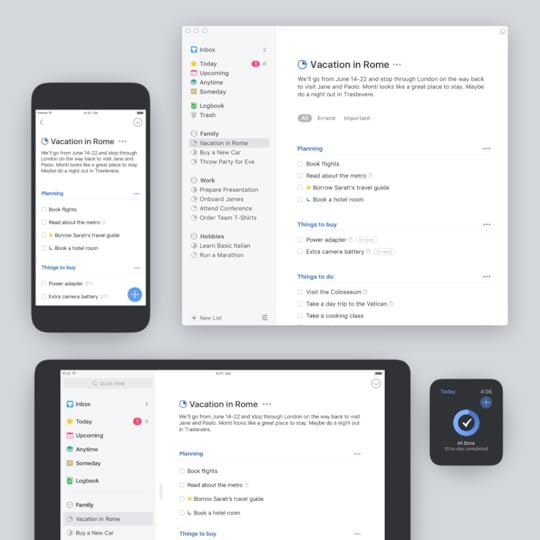
Aide from being design and optimised for Apple devices, Things also offers up a few unique features that you end up wishing were more commonplace.
For example, its “Upcoming events” interface constantly reminds you about what you need to do over the next couple of days and this stops you being caught out by tasks you’d forgotten about.
It’s a small feature but it makes a real difference – especially when you’ve a demanding tasks coming up that requires some mental preparation.
Key features
To-do lists: Create to-do lists for “Today” and “This evening”.Checklists: Tick events off your list as they’re completed with checklists.Calendar events: Create calendars for work, family, personal and other categories.Schedules & Reminders: Schedule tasks and set reminders.Upcoming lists: All of your upcoming tasks over the next few days appear in your upcoming list, so nothing catches you by surprise.Headings: Use headings to break up and organise tasks on your list.
Another simple but great feature is headlines. This allows you to break up to-do lists with headlines so you can categorise tasks and make larger lists easier to read. Again, simple but effective.
#7: WeDo (Mac, iOS, Android & Chrome)
$4.99/month, $39.99/year or $159.99 one-off fee
WeDo was originally designed for students but it’s developed into a decent work/life task management tools for professionals, too. There’s an emphasis on finding that work-life balance with WeDo and the app aims to make this more achievable for you.

Aside from creating tasks, setting due dates and all the usual things you would expect from a task management app, WeDo wants to help you develop good habits and you can create separate habits lists.
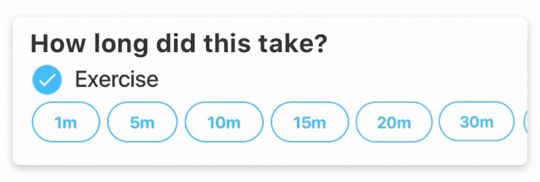
Another interesting feature is the apps asks you how long tasks take you after you’ve completed them and how you felt about them. All of this is added to your reporting data and you can see how your speed/mood about repeat tasks and aspects of life (work, diet, exercise. etc.) improves.
Key features
To-do lists: Create to-do lists, set due dates, add reminders and prioritise tasks.Folders: Group related lists together in folders.Rate tasks: Log how long it takes you to complete tasks, how important they were and how they made you feel.Habit lists: Create separate lists for new habits you want to develop.Sub-tasks: Break tasks up into more manageable sub-tasks.Time estimates: Estimate how long tasks will take and plan your schedule accordingly.
If your aim to manage tasks more effectively and improve that work-life balance or develop better habits, WeDo is definitely worth a look.
#8: Google Keep (iOS, Android & web)
Free
While many of the tools in this article are task management apps built around the to-do list concept, Google Keep is far more limited in terms of features. Strictly speaking, Google Keep is a note taking app with a checklist feature that acts as a to-do list.

You can also create bullet point lists, add voice notes, type text notes and add pictures to your dashboard and organise them with colour codes and lables.
Key features
To-do lists: Create to-do lists, notes, voice notes or add photos to your dashboards.Reminders: Set reminders to keep on top of your tasks.Labels: Add labels to your lists to categorise and organise them.Colour-code: Colour your notes to match categories or prioritise tasks.
With Google Keep you can set reminders for your tasks – including location based reminders – and that’s about the extent of it. You’re not going to choose Google Keep if you want advanced features but it’s a good option if you need a simple to-do list app that’s accessible on just about every device.
#9: Trello (Windows, Mac, iOS, Android & web)
Free, $9.99/mo or $20.83/mo
Trello does have a to-do list feature under its belt but this won’t be the main feature you choose it for. Trello is a project management tool for individuals and collaborative teams. Essentially, you assign dashboards to projects or large tasks and these dashboards contain lists of cards.

These cards can contain tasks, to-do lists or checklists, which can be assigned to members who are then able to interact with them. You can set due dates, mark tasks complete, add comments, rearrange or reschedule tasks and talk to members via instant messaging through the Trello app.
Key features
Project management: Trello is a highly capable project management app for collaborative teams.To-do lists: Create to-do lists, add due dates, assign them to people and manage tasks as they’re completed.Trello boards: Dashboards where you can create and manage lists of cards containing tasks and to-do lists.Work with anyone: Invite anyone from around the world to help you make things happen.Instant messaging: Talk to team members in real-time to discuss tasks.
When it comes to managing complex projects, Trello is one of the few apps on this list that genuinely simplifies the process – something you won’t get from a standard to-do list app.
#10: Habitica (iOS, Android & web)
Free
I can safely say Habitica is unlike any other tool in this article and unlike any other to-do list app I’ve ever come across. I should make it clear that Habitica isn’t really designed for work but more geared towards developing better habits while you’re away from the computer.
This doesn’t mean you can’t use it for work purposes or as a tool to improve work-life balance, though.
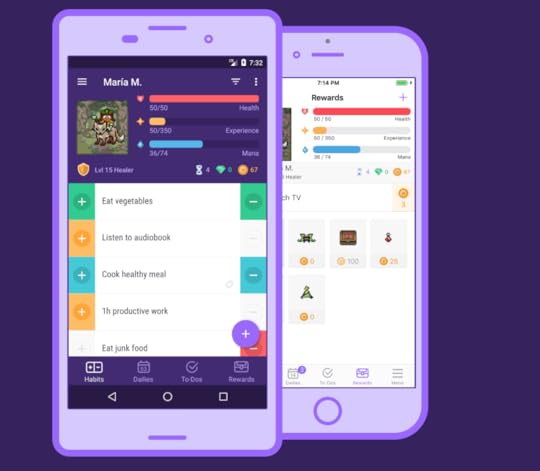
Habitica gamifies the to-do list experience by getting you to create an Avatar, which receives points and bonuses for completing the tasks on your list. The more points you win, the stronger your Avatar becomes and the more in-game features and rewards you unlock.
Key features
Gamified to-do lists: Habitica turns to-do lists into a mobile game experience.Habits: Schedule good habits you want to develop or bad habits you want to overcome.Avatars: Create your own Avatar to progress through your gamified to-do lists.In-game rewards: Earn points for completing tasks and developing good habits, level up your avatar, unlock new features and earn in-game rewards.Battle monsters: Join other Habitica users to fight monsters with your Avatars.
You can create positive habits that earn you points as well as negative habits you want to avoid, in which case points are taken away from you. You can also create habits that have both positive and negative outcomes – for example, eating a healthy dinner. If you eat something healthy, you win points; if you eat something unhealthy, you lose points.
Who says to-do lists need to be boring?
Choosing the right to do list app for you
All the apps in this article are great task management tools but they’re also very different at the same time. We all have our own way of working and our own requirements, so the rest of this article is going focus on helping you decide which of these apps meet your needs.
To do this, I’m going to compare each app on the following criteria:
Best apps for cross-platformability: A comparison table for which platforms each app is available on.Best apps for productivity features: A comparison table of key productivity features and which apps provide them.Best apps for user experience: A look at the best apps from a UX perspective.Best apps for teams: Which of these apps are most suitbale for teams/collaboration?Best value for money: How many features are you getting for your money?
I’ve put together some tables for cross-platformability, features and value for money – so you can compare things for yourself – but I’ll also add my own thoughts for each section. As for the best apps for teams section, some of these apps simply aren’t designed for teams and there are a few that really stand out on this aspect – so I’ll just go ahead and mention the apps that win this category and explain why.
Best apps for cross-platformability
The first thing I check when I like the look of an app is which platforms it’s available on. It doesn’t matter how good a tool is if it’s not available on the platforms/devices you need to use it on.
So here’s a quick comparison table to show you what each of the apps in this article are available on.
Tool
Desktop
Mobile
Web app
Wunderlist
Windows, Mac
iOS, Android
✔
Todoist
Windows, Mac
iOS, Android
✔
nTask
iOS, Android
✔
Any.do
Windows, Mac
iOS, Android
✔
TickTick
iOS, Android
✔
Things
Mac
iOS
WeDo
Mac
iOS, Android
✔
Google Keep
iOS, Android
✔
Trello
Windows, Mac
iOS, Android
✔
Habitica
iOS, Android
✔
Generally speaking, if there’s a web app and a mobile app for your device, you should be sorted from a personal standpoint. The only downside with web apps is not being able to use them offline – so, if this is important to you, it’s always good to have a desktop app as well.
Just make sure you can actually save things while you’re using the app offline.
It’s also worth keeping in mind that you may move from Apple to other devices (or vice versa) in the future. Having support for Windows, Mac, iOS and Android will give you the freedom to do this without losing your favourite to-do list app.
Finally, if you’re looking for an app that you can use to collaborate with other, you want the broadest support for devices and browsers possible (think about browser extensions as well).
Best apps for productivity features
All of the apps in this article are designed to help you become more productive but they vary greatly in terms of features. Most of them are very good task management tools while some are better than others when it comes to project management, collaboration and reporting.
Here’s how they compare.
Tool
Task management
Project management
Assign tasks
Set goals
Messaging
Reports
Wunderlist
Strong
Average
✔
✔
Todoist
Strong
Average
✔
✔
✔
✔
nTask
Strong
Strong
✔
✔
✔
✔
Any.do
Strong
Average
✔
TickTick
Strong
Weak
✔
✔
Basic
Things
Strong
Basic
WeDo
Strong
Weak
Habits
✔
Google Keep
Average
Trello
Strong
Strong
✔
✔
✔
✔
Habitica
Strong
Habits
It all comes down to what you’re looking for from one (or more) of these apps. If you only need a to-do list/day planner then Any.do is an excellent choice that’s available of just about every platform. It may not have all of the productivity features of some other options we’ve looked at but it does to-do lists and task management very well – and that might be all you need.
It’s a similar story with TickTick, Things and WeDo – they’re all great task management apps that don’t put additional features in your way.
That said, if you need to manage projects, teams or collaborate with others, then your list of options narrows. Likewise, if you want to set productivity or habit goals and check your performance with analytics/reporting, then it’s easy to see which apps stand out.
Best apps for user experience
This is a really tricky one because all of these apps offer great user experiences. Google Keep is perhaps the only exception but it’s mostly feature-orientated changes that would improve the experience, in my opinion (although a visual upgrade would be appreciated, too).
While I’m happy to say all of the other apps in this list are very strong UX-wise, there are a number of different experiences offered between them – so this is the angle I’m going to take:
Best UX for personal to-do listsBest UX for personal projectsBest UX for team projects/collaboration
Here’s the criteria I’ve used to make the call:
Visual design: Points awarded for clean, minimal designs that make it easy to understand and use the app.Navigation: Features always being within a few clicks and navigation that’s easy to understand.Features vs usability: More features are great but only if they don’t add unnecessary complexity that’s going to kill productivity.Cross-platform experience: Cross-platform support and consistent experience as move between different versions.Integrations: Allow you to add features that you need, even if they’re not provided by the app itself.Documentation & support: Sometimes things just don’t work as you expect them to and this is where you need documentation and support to back you up.
So, here’s my pick for personal to-do lists.
Best user experience for personal to-do lists
The best to-do list experiences come from the apps that really focus on this role. A lot of the tools in this article are so much more than to-do list apps and, while this is fine if you want the added capabilities, their user experiences aren’t centred around the specific purpose of a to-do list app.
If you’re simply after the best to-do list app as a standalone tool for your personal use, then Any.do, TickTick, Things, WeDo and Habitica are the ones to look at.
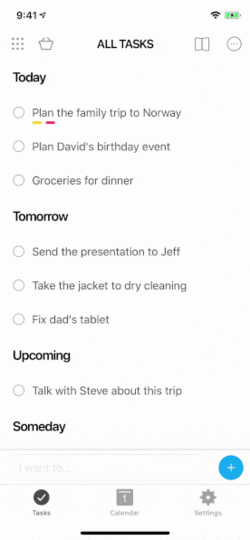
Any.do is one of the best to-do list and task management apps I’ve ever tried and it offers a consistent experience across every platform, which you get the same fantastic UX across all of your devices.

If you’re an Apple-only user, Things is the obvious choice and I would say the experience is actually better than Any.do. The only downside is you can only use it on Mac and iOS devices but this also benefits the experience by allowing its developers to truly optimise for Apple’s operating systems.

TickTick is another fantastic to-do list experience and it does actually add some more advanced features into its premium version but they don’t take anything away from its task management credentials – and it deserves credit for that.

Then we have Habitica, which is by no means your typical to-do list app, but what an experience the team behind it has managed to create. The gamification approach isn’t going to be for everyone but, for those who do appreciate it, nothing else will cut it after trying Habitica.
Best user experience for personal projects
If you need to manage personal projects or a lot of different to-do lists, then you’re going to need an app that allows you to organise tasks with more control.
In this case, you really need to be able to schedule tasks, group them together, prioritise tasks and manage them as you progress through each project.

The free versions of nTask and Trello should have everything you need to manage the most complex of projects. You don’t quite get all of the features either app has to offer but the main difference between the free and paid versions is collaboration features, which you probably don’t need if you’re working on projects alone.
If you do need more than the free versions offer, nTask is pretty affordable at $2.99 per month and even Trello’s $9.99/mo should more than pay for itself if its features are going to save you time on every project and limit the risk of mistakes.
The potential issue with nTask and Trello is they may actually have too many features for managing personal tasks and projects. If you still want that simple to-do list experience, with just enough features to help you manage more complex workloads, then Wunderlist and Todoist are probably for you.
For an even more minimal experience, you may find the paid versions Any.do, TickTick and WeDo have just enough task management features for you to organise your workload.
Best user experience for teams/collaboration
If teamwork/collaboration is a priority, then features and cross-platform availability are the most important things. The standout winners in this scenario are nTask and Trello – but far the best experiences for teams and individuals who need to collaborate.
I’ll explain more about this in the next section.
Best apps for teams
Well, I’ve given the surprise away already but let me show you the specifics of why nTask and Trello are the standout apps for teams.
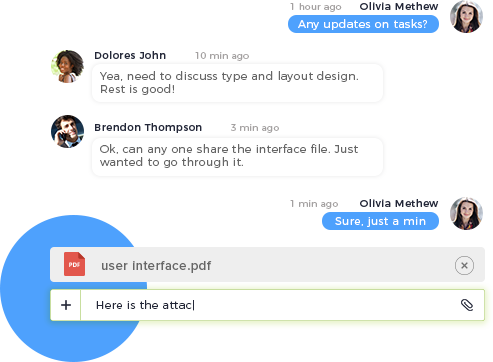
Teams need to be able to communicate and both of these apps have integrated messaging built into their software. Which means team members can discuss and collaborate on tasks from anywhere, whenever they need to.

nTask and Trello approach project management in different ways (checklist vs cards) but they’re both incredibly effective. With the paid version of either app, you can manage multiple teams, any number of projects and organise the most complex of workloads.
Everyone knows what needs doing, what’s already been done and what the overall progress of each project looks like.

So how do you choose between these?
Well, the biggest difference is going to come down to whether you prefer nTask’s more traditional interface or the card approach Trello takes. It’s not a question of one being better than the other; they’re just different and it probably won’t take long to find out which one you prefer.

One benefit in favour of Trello is the fact it has desktop apps for Windows and Mac, whereas nTask doesn’t. The nTask web app means you can still use the platform on just about any device but you’re going to need an internet connection.
nTask has the upper hand in terms of features, though. You get a lot of project management features to help you calculate budgets, define risks and issues with each project, arrange meetings and some really strong reporting to go with it.
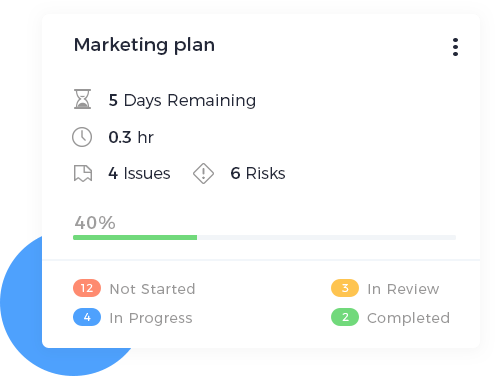
There are also unique productivity features, such as time tracking, which allows you to see how long tasks are taking. It’s an incredible set of features for a very reasonable monthly subscription fee. You can get most or all of these features in Trello by integrating with other tools (and you are going to need other tools anyway) but nTask may be able to reduce your over expenses by offering so much right out of the box.
Best value for money
I can’t tell you what you need from any kind of productivity app, which means I can’t turn around and say which one offers the best value for money – it all comes down to getting what you need for the lowest price.
What I can do is score each app based on the features they offer, their availability across different platforms and the asking price. This way, I can give them an overall score, which at least gives you an idea of how much you’re getting in terms of features and support for your money. Tool Cross-platform Features Cost Overall Wunderlist 10/10 8/10 $4.99/user* 8.6/10 Todoist 10/10 9/10 $5/mo* 9/10 nTask 8/10 10/10 $2.99/mo* 8.6/10 Any.do 10/10 6/10 $2.99/mo* 8.3/10 TickTick 8/10 7/10 $27.99/year* 8.6/10 Things 4/10 5/10 $9.99-$49.99 6/10 WeDo 9/10 7/10 $4.99/mo or $159 7.8/10 Google Keep 8/10 4/10 Free 7.3/10 Trello 10/10 10/10 $20.83/mo* 8.3/10 Habitica 8/10 5/10 Free 7.6/10
Free apps instantly get 10/10 for cost while reasonable one-off payments get a score of 9/10 and monthly fees rated down from 8/10 depending on how high the monthly asking fee is.
I’m using the most expensive plans to score cost as these prices, otherwise you’re not getting all the features that have been awarded their score. Keep in mind there are cheaper or free versions of most of these apps available.
I should also mention that you get a lot of features on the free version of Trello and there’s a $9.99/mo version that will probably be enough for most users – perhaps not for certain business teams, though.
Meanwhile, TickTick doesn’t give you much at all on its free version but a $27.99/year fee makes its premium version the cheapest paid option on this list.
Get more done with your favourite to-do list app
Hopefully, you now know what you need from a to-do list/task management app and choosing the right tool for your needs is going to be a much easier process now. Even if you don’t end up using one of the recommendations on this list, you should have a better idea of what kind of apps are available and which of them are going to work for you.
Most of the apps in this article have free versions that you can use to get a feel for them yourself – so try out the ones you think have potential and see how you get on.
Once you’ve found your favourite to-do list app, you can manage your way to a more productive workflow and start adding other tools to your productivity toolkit.
The post 10 Best To-Do List Apps & Day Planners to Get More Done appeared first on Venture Harbour.
January 22, 2019
10 Best Distraction Free Writing Apps for Bloggers, Writers & Authors
In the digital age, basically everyone is a writer of some description – whether it’s social media content, company blogs, business proposals or something a little more traditional like news stories or screenplays.
Businesses and individuals of all kinds are writing more content than ever.
The biggest challenge for today’s writers is getting everything done in the most productive way. Demands are high and deadlines are short in the modern age, which means there’s no space for unwanted distractions getting in the way of your workflow.
In this article, we’re looking at the 10 best distraction-free writing apps that will help you produce a higher volume without compromising on quality.
The 10 best distraction-free writing apps
First, we’re going to introduce the best distraction-free writing apps with a quick overview of what they have to offer. Then, we’re going to focus the rest of this article on helping you choose the right app(s) for you, based on their strengths and weaknesses.
One thing I’ll make clear now is that there are two general types of writing apps here. First, you have WYSIWYG (what you see is what you get) word processors, which are similar to Microsoft Word and Google Docs, where you can highlight text and change formatting by selecting buttons or using keyboard shortcuts – all of which is visible within the document.
Then you have markdown editors, where you pretty much do everything from the keyboard – placing hashtags in front of headings and asterisks in front of bullet point items.
 Markdown editors like Ulysses use special characters to format and style text
Markdown editors like Ulysses use special characters to format and style textThese markdown editors tend to be the more distraction-free writing experiences but that’s an oversimplification – and you’ll see what I mean once you’ve looked at the following apps.
Here are the 10 distraction-free writing apps you need to know about.
#1: Ulysses (Mac, iOS)
£4.49/mo or £35.99/year
Ulysses is a powerful writing app for Mac and iOS that allows you to write content without ever taking your fingers away from the keyboard. Its markdown-based text editor means you’re no longer clicking settings with the mouse; instead, you’ll style things like headings by placing hashtags in-front of your text.

In terms of removing distractions, Ulysses packs a number of features to help you focus on the task at hand.
Key features:
Distraction-free interface: Feels like you’re writing on a clean sheet of paper without any of the usual distractions found with word processors.Markdown-based writing: Ulysses’ text-only editor means you can write and style your content without lifting your fingers away from the keyboard.Keyboard navigation: Navigate the Ulysses dashboard from the keyboard.Typewriter mode: Only shows the line you’re currently working on to remove all possible distractions.Publishing: Publish to WordPress and Medium from within the Ulysses app or schedule them at the push of a button.
Despite all the emphasis on simplicity, Ulysses allows you to create rich documents with images, links, footnotes, blockquotes and everything else you would expect from a word processor. While there’s also a live preview feature to show you what your output is going to look like and built-in export styles for you choose from.
#2: Storyist (Mac, iOS)
£48.50 one-time fee
As the name suggests, Storyist is designed for writers who need to tell a story. Aside from providing a distraction-free writing experience, the app makes it easy to pen out your plot, characters, settings and everything else you need to convey in your story.

While the app is designed for screenwriters, novelists and creative storytellers, Storyist’s features are just as important for today’s content marketers and journalists who need to craft stories around their publishing objectives.
Key features:
Minimal interface: Not as distraction-free as Ulysses but a minimal interface that keeps your focus on what you’re writing.WYSIWYG: With Storyist, you’ll be setting fonts, highlighting text and clicking buttons to style it – more like Microsoft Word than Ulysses.Outliner: A tool for outlining your plot, objectives, quotes and other core elements to keep your writing on track at all times.Story development tools: Put images to character names or places to give you a visual cue for descriptive writing.Word count tracking: Tracks daily and project word count goals to help you stay on track – especially useful for longer pirces/projects.
This app is clearly designed with screenwriters in mind and storytelling writers are going to get the best out of it. If you’re strictly inot bloggin or article writing, then there are probably better choices for you in this article but don’t forget the importance of storytelling in marketing content such as videos and webinars.
#3: iA Writer (Windows, Mac, iOS, Android)
£28.89 one-off fee

iA Writer is another markdown text editor, which allows it ditch all of those buttons and setting for a truly distraction-free interface. Much like Ulysses, you can create documents without your fingers leaving the keyboard.
Key features:
Distraction-free interface: iA Writer’s interface is one of the most distraction-free editors you’ll come across.
Markdown-based writing: Create documents entirely from keyboard commands.Typewriter mode: Fades everything except the sentence or paragraph yuo’re currently typing to boost your focus.Cross-platform: Use iA Writer across Windows, Mac, iOS and Android devices.
This cross-platform functionality is great if you want to use a distraction-free writing app across different devices types and operating systems, especially if you’re jumping between Windows and iOS or Mac and Android. That said, if you’re an Apple loyalist, Ulysses still offers the slightly better set of features – namely its publishing and file management system.
#4: Hemingway ( Windows, Mac, web )
$19.99 for desktop, free online app
Hemingway is different from the other writing apps we’re looking at in this article. Aside from providing a distraction-free writing experience, Hemingway aims to make you a better writer by highlighting sentences and paragraphs that are too long, as well as any use of adverbs and the passive voice – three of the most common and serious writing mistakes used by untrained writers.

You can download the Hemingway app for Mac and Windows or use the online app for free.
Key Features:
Distraction-free writing: Despite the intelligent technology powering Hemingway, it still serves as a great distraction-free writing tool.WIZYWIG: Hemingway is still a WIZYWIG editor but this is implemented in a far more simplistic way than apps like Microsoft Word.Improve your writing: Hemingway scores the readability of your writing and highlights areas that can be improved to help you become a better writer.Free online app: Use Hemingway on any device with an internet connecting by simply typing its URL into your brwoser.
Hemingway is designed to make you a better writer and it also happens to be one of the best distraction-free tools out there. Not to mention the fact you can use the online app for free with the only downside being you can’t save your work (although you can copy and paste into another app or download the full Hemingway app for Windows or Mac).
#5: Byword (Mac, iOS)
£10.99 for Mac, £5.99 for iOS
Byword is an incredibly simple markdown text editor for Mac and iOS. If you’re after the minimalist approach, this is about as distraction-free as it gets and everything you create is fully synced between your Mac and iOS devices.

You can also publish directly to Medium, WordPress, Blogger, Tumbler and Evernote from within the app.
Key Features:
Distraction-free interface: Super-minimal interface and with a truly distraction-free experience.Markdown writing: Format and style your text as you type.Sync: All your documents are synced with iCloud and Dropbox so you can access and edit them from all of your Mac and iOS devices.Publishing: Publish directly to Medium, WordPress, Blogger, Tumblr and Evernote.
If you’re strictly an Apple user and you’re looking for the truly distraction-free writing experience, Byword is one of the best options available.
#6: Grammarly (Windows, Mac, web)
Free, $11.66/mo or $15/mo
Grammarly isn’t actually a distraction-free writing app; it’s an intelligent spelling and grammar checker that does a pretty good job of spotting basic writing errors – far better than you’ll be used to with spell checkers in apps like Microsoft Word.

What many Grammarly users don’t know is that you can also use it for writing with its ultra-simple document app. You can’t style or format text with the editor – all you can do is type out your title and then just write.
That certainly counts as distraction-free writing in my book.
Key features:
Grammar & spelling checker: Genuinely useful grammar and spelling checker that works in real-time or after you’ve finished writing if you prefer.Distraction-free writing: Grammarly’s document app basically has no features at all but it’s definitely a minimal, distraction-free experience.Chrome extension: You can use Grammarly to check your writing as you type online with the Chrome extension.
Grammarly isn’t a word processor or text editor in anyway at all – so don’t expect those kind of features. It’s document app is more like an online notepad without any settings or features to get distracted with.
#7: Evernote ( Windows, Mac, iOS, Android, web )
Free, $5.83/mo or $12.50/mo
Evernote’s document app is far more sophisticated than Grammarly – almost to the point where it can replace a fully-featured word processor like Microsoft Word with something far more minimal.

You also get all of the other Evernote features as part of the package: cloud storage, file sharing, web clipper, notes and a whole bunch of things to help you create content.
Key features:
Minimal writing app: Maybe not quite distraction-free writing but far more minimal than typical word processors with all of the same features and more.WYSIWYG: Style your document and see your changes as you make them.Cross-platform: Apps for Windows, Mac, iOS, Android and a web app mean you can use Evernote everywhere you need to.
Evernote’s document writer isn’t exactly topping the list of its features but if you’re looking for a balance between distraction-free writing and all the functionality of a word processor (and then some), this is a strong option.
#8: Medium (web)
Free, $5/mo or $50/year
Medium is one of the most popular publishing and content discovery platforms around these days. Its online story interface is as minimal as any distraction-free writing and you only have basic formatting options for titles, links, quotes and basic styles (bold and italic).
That’s it

Of course, the main attraction of Medium is its user base, who are constantly looking for great content to engage with, making this a powerful social/content marketing tool in its own right.
Key features:
Distraction-free writing: Very minimal writing experience with basic formatting options.WYSIWYG: Medium’s story interface doesn’t give you a lot of formatting options but they are WYSIWYG so you can easily see what you’re going.Cross-platform: The web app nature of Medium means you can pretty much access it from any device with an internet connection.Publishing: The added bonus of using Medium as a content publishing and discovery tool.
Medium’s interface provides a great distraction-free writing experience and this is precisely why it has made onto our list. This, plus the fact it’s essentially a cross-platform option thanks to its web app. The only real downside is you’re limited to publishing to Medium or copy and pasting into another app if you want to publish elsewhere.
Dealbreaker? Well, that’s entirely up to you and it costs nothing to try it out.
#9: Typora ( Windows, Mac, Linux)
Free
Typora is another free option that’s technically a markdown editor but it’s worked the whole WYSIWYG experience into things. So you type your hashtags for headings, asterisks for bullet points, etc. and Typora shows you what it’s all going to look like in its interface – all in real-time.

It’s a fully-featured markdown editor, too, which means you can import images by typing file paths, create tables and diagrams, do mathematics and pull off all sorts of magic – all from your keyboard and see the visual results, thanks to that WYSIWYG implementation.
Key features:
Distraction-free interface: Typora is nothing more than a text editor (like Notepad++) until you start typing – it doesn’t get more distraction-free than this.Markdown writing: Format your text, import images and do everything from the keyboard.WYSIWYG: Typora is very much a markdown editor but it implements that WYSIWYG experience to give you a better visual idea of what your documents look like in rendered HTML.
sdjcjdhbcd
#10: Google Docs ( Windows, Mac, iOS, Android, web)
Free
Okay, so I’m really pushing it here by trying to call Google Docs a distraction-free writing app but it’s certainly a more minimal experience than Microsoft Word or similar word processors.
That’s not why I’m recommending it, though. The reason Google Docs makes it onto this list is because it’s one of the best writing apps for teams that want to collaborate and it still offers a fairly minimal writing experience, despite all of the features packed into the platform.

Aside from its collaborative prowess, Google Docs is a truly cross-platform application with apps for just about every OS out there. While the writing app itself isn’t as distraction-free as the other options in this article, you can create, save, edit and share your documents from anywhere and collaborate remotely.
In this sense, the file creation, management and editing processes are where Google Docs kills distractions most effectively.
Key features:
WYSIWYG: Think a stripped down version of Microsoft Word with all of the same functionality and more.Cross-platform: Google Docs kills it in this regard.Collaboration: Teams can collaborate on the same documents in the same location or remotely anywhere – all in real-time.
If you’re looking for a truly distraction-free writing experience, Google Docs isn’t going to top your list. In terms of a collaborative tools that accessible from anywhere, on any device, though – this is the one.
Which is the distraction-free writing app for you?
It all comes down to what need from a writing app, which platforms you need to use and how important the distraction-free experience is over other features.
To help you make this choice, we’re going to focus the rest of this article on narrowing your options by looking at the following criteria and recommending the best apps for each of them:
Platform availability: First, you need an app that’s supported on all the devices you need to use it on, whether you’re a Windows, Mac, iPhone or Android user.Cross-platformability: How good is the app for using across all of your devices and platforms so you can start work on one machine, finish on another and collaborate with others as you go?Writing features: All of these apps offer a different range of writing features – so which are the ones you really need?Cost & Value: There’s always a budget to work with and you want to know you’re getting the best value for your money.Usability: There’s nothing more distracting than an app that’s difficult to use and this defeats the whole point of what we’re trying to do here. So let’s take at the most usable of the apps mentioned in this list.
Once we’re done with this lot, you should be ready to choose the writing app for you with confidence.
Best apps for your devices and platforms
It doesn’t matter how good a writing app is if it’s not available on the platforms you need it on. So, let’s start by comparing the platforms each of these tools are available on.
Tool
Desktop
Mobile
Web app
Ulysses
Mac
iOS
Storyist
Mac
iOS
iA Writer
Windows, Mac
iOS, Android
Hemmingway
Windows, Mac
Yes
Byword
Mac
iOS
Grammarly
Windows, Mac
*
Yes
Evernote
Windows, Mac
iOS, Android
Yes
Medium
*
Yes
Typora
Windows, Mac, Linux
Sites & apps
Google Docs
Windows, Mac
iOS, Android
Yes
While Grammarly and Medium both have mobile apps available, they don’t contribute to the distraction-free experience we’re focusing on in this article, which is why we’ve marked those cells with asterisks.
Best apps for using cross-platform
Now that we’ve compared the platforms each of these tools are available on, it’s not difficult to recommend the best options for cross-platformability. If you need to be moving between devices, operating systems and browsers, these are the first apps you want to consider:
Google DocsEvernoteiA Writer
The funny thing is, the top two in this category aren’t even distraction-free writing apps in themselves but they nail it when it comes to cross-platformability.
If this is important to you, then these are the top three choices for you.
Best for writing features
The downside with distraction-free writing apps is you tend to sacrifice a lot of writing features for the sake of simplicity. If you only want to type plain text then a regular text editor will do the trick for you – but this isn’t why you’r reading this article.
You want to find a certain balance between distraction-free writing and the features you need to get the job done. Feature-wise, here are your best options:
Google DocsEvernoteTypora
None of these apps offer the most distraction-free writing experience (although Typora comes close), but you can simply do more with them.
What’s amazing is all of these are available for free, despite packing more features into their tools than the other options.
Best for cost & value
In order to determine how much you’re getting for your money with these apps, we’ve graded them in three categories:
Freedom: How distraction-free the writing experience is.Features: What you get in terms of writing, publishing and document management features.Cost: The relative price of each app.
We’ve compared the pricing of each tool and converted these into scores out of ten (eg: free = 10/10) and then calculated an overall score based on the mean average.
Tool
Freedom
Features
Cost
Overall
Ulysses
9/10
7/10
£4.49/mo
6/10
Storyist
7/10
6/10
£49.50
6/10
iA Writer
9/10
6/10
£29.89
7/10
Hemingway
10/10
3/10
Free
7/10
Byword
10/10
7/10
£10.99
8/10
Grammarly
10/10
3/10
Free
7/10
Evernote
6/10
9/10
Free
9/10
Medium
9/10
1/10
Free
7/10
Typora
6/10
8/10
Free
8/10
Google Docs
5/10
10/10
Free
8/10
Obviously, price factors heavily in this category and the apps that are available for free have a big advantage in this section.
Best for usability
As I said earlier, there’s nothing more distracting than a app that’s difficult to use and all of the tools in this article score well when it comes to usability.
This already makes it difficult to select winners in this category and usability is a fairly subjective thing, too. If you’re coming from Microsoft Word, for example, Google Docs is always going to be easier to get used to than a markdown editor which switches the writing process on its head.
With this in mind, I’m recommending these three options as the most usable for different types of users:
Evernote: For users who want the distraction-free writing experience with all the features and WYSIWYG you expect from a traditional word processor.Ulysses: For a truly distraction-free writing experience that makes it easy to make the transition from WYSIWYG to markdown writing.Byword: For the most usable, distraction-free writing experience for people comfortable with markdown editors.
Whichever of these writing apps you choose to work with, usability won’t be a major issue, though. They’re all great in this regard and the ultimate choice will come down to personal preference and the features you need.
Best of all, many of these are free so you can try them out to get a better idea of what you want from a distraction-free writing app.
Don’t let distractions kill your content efforts
Your readers will never fully know the time and effort that goes into producing all of your content and all that matters to them is the end product. In terms of ROI, this is all that matters to your content marketing strategy, too, and every distraction that holds you back reduces the return you get from your content investment.
Finding the tools that to help you hit targets faster are invaluable and among these 10 distraction-free writing apps, I’m sure you’ll find the tool that makes all the difference.
All that’s left now is for you to choose the right app for your needs.
The post 10 Best Distraction Free Writing Apps for Bloggers, Writers & Authors appeared first on Venture Harbour.
January 16, 2019
10 Best Website & App Blockers to Block Facebook, Instagram & More
In a typical 8-hour day, how many hours do you spend actually being productive? If you’re anything like the average worker, it’s probably a lot less than you would like to admit.
Two separate studies – one carried out by the Bureau of Labor Statistics (US) and another by VoucherCloud (UK) – both find the average worker spends just two hours and 53 minutes being productive during an 8-hour day.
Even if we round this up to three hours per day, this still means most of us are spending more than five hours per day, over 25 per week and more than 100 hours every munch underachieving.

In other words, these findings suggest we’re only productive for less than 37% of an 8-hour working day and there are plenty of other studies with similar conclusions.
Any entrepreneur is going to weep into their coffee at that kind of statistic and things are even worse for business owners tallying up the total amount of wasted hours between all of their employees.
Clearly, we’ve got a productivity problem on our hands but what’s keeping us from hitting targets consistently?
What’s keeping us from being productive?
This is a difficult question to answer on a personal level because – let’s face it – we’re good at lying to ourselves and believing what we want to believe.
Take a look at our post on how confirmation bias can be used by marketers if you’re not quite ready to admit it convinced by now.
Luckily, VoucherCloud has done a pretty good job of answering this question for us collectively by asking 1,989 UK full-time office workers about their daily working habits.
The findings are quite telling.
With 79% of all respondents admitting they don’t consider themselves to be productive throughout the entire working day, participants were then asked to rank the top ten distractions keeping them from getting things done:
Checking social media – 47%
Reading news websites – 45%
Discussing out of work activities with colleagues – 38%
Making hot drinks – 31%
Smoking breaks – 28%
Text/instant messaging – 27%
Eating snacks – 25%
Making food in office – 24%
Making calls to partner/ friends- 24%
Searching for new jobs – 19%
What a surprise [sarcasm warning], social media is the biggest distraction (47%) and reading news websites comes in at a close second (45%). In fact, five out of the top ten workplace distractions ranked in this study involve the internet or phone apps.
So this gives us a good idea of what the average office worker might be getting up to throughout the working day and if you’re running a business with office-based employees, you’re looking at one of the biggest barriers to productivity.
The good news is there are various apps you can use block out these distractions and we’re going to look at ten of the best of them in this article.
First, though, we need to try and answer the really tricky question in all of this.
How much time are you wasting online every day?
Whether you’re an employee yourself, a business owner, entrepreneur or freelancer, understanding how much time you’re really wasting every day is the first step to becoming more productive.
Let’s be honest here, CEOs and marketing managers are still human beings and we’re all more vulnerable to time-wasting than we’d probably like to admit.
There’s no shame in it if you’re willing to pinpoint your weaknesses and try to put a fix them.
Thankfully, it’s quite easy to find out how much time we’re actually being productive on a daily basis these days. There are plenty of time tracking apps such as Harvest and Toggl that clock the hours you spend getting things done – as well as the hours you spend not getting much done at all.
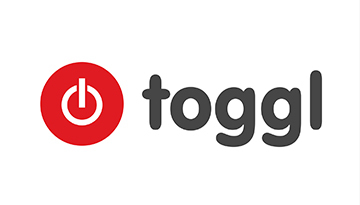
Toggl tracks your productivity so you can pinpoint where time is being wasted.
Check out our list of the 10 best time management and productivity apps for a more detailed look at the tools available to help you do this all-important first task.
Once you know how much time you’re wasting on a daily basis and what you’re wasting it on, you’re ready to start using one of the tools we’re looking at in this article to block the apps and sites that are killing your productivity.
Here are our top ten recommendations.
Tool
Platform
Price
Blocks
Freedom
iOS, Android, Mac, Windows
$2.24/mo
Sites & apps
Y-Productive
Mac, Windows
€6/mo
Sites & apps
Focus
Mac
$9.99/mo
Sites & apps
DNSFilter
Mac, Windows
$5-$750/mo
Sites
Mindful Browsing
Chrome browser
Free
Sites
Cold Turkey
Mac, Windows
$25
Sites & apps
StayFocused
Chrome browser
Free
Sites
RescueTime
iOS, Android, Mac, Windows
$9/mo
Sites
1Focus
Mac
$0.99/mo
Sites & apps
Zero Willpower
iOS Safari
$1.99
Sites
#1: Freedom

According to Freedom, you lose 23 minutes every time you check an email, open up social media, respond to a notification or any other distraction gets in the way of your workflow. That means just five emails throughout the day could end up costing you almost two hours of productivity and a 2007 study from Microsoft backs this theory up.
This is the concept behind Freedom – a productivity app that lets you block distracting websites and apps so you can keep doing what matters most.

Features:
Block websites: Block an unlimited number of distracting websites so you can focus on what matters.
Block apps: Block time-wasting apps—from email clients to social media and games.
Block the internet: Block the whole internet with the click of a button.
Blocklists: Select websites and apps from Freedom’s preset lists or create an unlimited number of custom lists to suit your needs.
Sync blocks across devices: Block distractions across all of your Mac, Windows, Android, and iOS devices.
Scheduling: Start a block on the fly or schedule blocks in advance that will begin automatically. You can also create recurring blocks to help make productivity a habit.
Locked mode: Prevents you from ending a block session ahead of schedule.
Pricing: $129.00 one-off fee, $2.24-$6.99/month, free trial available
What do Freedom users say?
“They say the secret to happiness is freedom…I have found the secret to freedom is to be disciplined. The Freedom app disciplines me when I don’t have the human strength to do so, allowing me the freedom to focus on what really matters when my work is done.” – Maura Chanz; Actress, Artist, Entrepreneur and Founder of Tribe
“Freedom is an essential tool in my work. I use it to block myself off distracting sites like Facebook and Twitter in the morning to help me get my most important work done early in the day and to cut myself off in the evening so I have time to shut down and unwind.” – Taylor Pearson, Author and Entrepreneur
You can read more customer stories over at the Freedom website.
#2: Y-Productive
Y-Productive isn’t just a website and app blocker tool, it’s a fully-featured productivity application that tracks the amount of time you actually spend working, what’s keeping you from making progress and allows you to block out the distractions.

Y-Productive says we get distracted at least 40 times per day but research shows this number is actually much higher in the digital age. Y-Productive promises to help you become more productive within a few days by pinpointing your distractions and removing them from the working day.
Features:
Behaviour Analysis: Y-Productive logs your web and desktop activities as “Productive” or “Unproductive”, tracks time spent on websites or apps and counts the number of your distractions.
Focus Mode: Block distracting websites with built-in automatic website blocker on Safari, Firefox or Chrome.
Activities Categorisation: Build a personal working environment that best fits your needs.
Projects: Allocate your tasks under relevant projects and get the summarized statistics of your work.
Productivity Reports: Get summarized insights covering your performance and time spent on tasks or projects by days, weeks or months.
Pricing: €59 one-off fee, €6-€7/month, free trial available
What do Y-Productive users say?

Y-Productive scores 4.5/5 from 58 reviews on Capterra and most users praise the platform’s tracking, reporting and blocking features. Some users mention usability concerns but there are just as many (or more) who say the learning curve is easy or non-existent.
“It’s common for us all to underestimate the time that tasks will take; Y-Productive shows actual time expended. This can be fed back into future project plans giving more realistic timeframes and costs. Y-Productive is also good for spotting areas where efficiencies can be (or should be) introduced and to ensure that sufficient time is spent on important tasks that may not be urgent.” – Capterra review by Colin M, Consultant
“I used Y-Productive for a couple of days to get a first-hand experience, and I liked it. However, maybe I’m used to Timing, or indeed Y-Productive lacks some of the functionality I use every day, I felt it’s not ready for me yet. Nevertheless, as I previously said, I liked what I saw, and I’m looking forward to giving it another drill once my Timing subscription ends.” – Capterra review by Martiín C, DevOps Engineer | Deviget LLC
You can read more Y-Productive reviews by heading over to Capterra.com.
#3: Focus
Focus is a Mac-only tool that blocks apps and specific URLs, meaning you can block applications, websites and even specific pages of sites. You’ll also be greeted by inspirational quotes if you stray onto one of your blacklisted pages, which should give you the motivation you need to get back on track.

Alternatively, you can create your own quotes or simply tell yourself to get your lazy ass back to work before that deadline kicks you in the butt.
The drag and drop functionality makes it easy to build your block lists and the break time feature is a nice addition, too. In terms of features, Focus has got a lot going for it but I’ve heard some complaints about bugs and functionality.
Features:
Targeted Blocking: Block entire applications, whole websites or even specific pages.
Scheduling: Set your block lists to run at specific times and schedule breaks for when you’ve earned a good rest.
Progress Tracker: See how much time you’ve saved with your app blocker by generating custom graphs and setting new productivity targets.
Customizable Quotes: When you try to visit a blocked site or application, Focus will show you a grey screen with an inspirational quotation. Choose from Focus’ extensive catalogue of motivational quotes, or set it to feature one of your own.
Break mode: Take breaks after long sessions or disable them entirely if you’re going all out.
Drag & Drop: Quickly add and remove websites to Focus by dragging and dropping them onto the menubar icon.
Global hotkey: Instantly get in the zone from any application with a global hotkey you can configure (by default it’s control+option+command+f).
Pricing: $9.99/month or $99.99/year
What do Focus users say?

The latest version of Focus has been reviewed 15 times on MacUpdate with a score of 3.5/5, down from its overall score of 4/5 (including reviews for previous versions).
Users are generally positive about the application but some users report performance issues.
“Just discovered this over the last few days – highly recommended. Can block websites and applications – optional hardcore mode prevents re-access. Trial version available, developer is responsive and app is under active development.” – MacUpdate review by tadpole-angel
“Couldn’t figure out how to set it up on a schedule. And it caused my browsers to behave erratically. When I’d try to visit a black-listed site, I’d get literally dozens of Focus tabs with the little quotes on them, instead of just turning the ONE tab I’d tried to use for Reddit into a Focus message. It might work for others, and might work better on a newer OS (I’m on El Capitan), but it was more confounding than helpful for me.” – MacUpdate review by Robio
You can read more Focus reviews over at MacUpdate for more user feedback.
#4: DNSFilter
DNSFilter isn’t a productivity app like most of the options we’re looking at in this article. Instead, we’re talking about an advanced security suite for businesses that also allows you to block access to websites.

It uses artificial intelligence to identify malicious domains and undesirable content in real-time, whereas most systems like this use databases of known threats that ultimately become out-of-date. Meanwhile, DNSFilter constantly updates itself to tackle new threats as they emerge.
As a website/content blocker, DNSFilter isn’t as fully-featured as some of the other options we’re looking at and this isn’t a productivity tool for entrepreneurs or freelances. This is a security tool for businesses of all sizes that also want to block access to certain categories of websites and content – from social media to adult content.
Features:
Security threat protection: Protect your users and networks against command and control (botnet) attacks, malware, phishing, viruses, and other threats.
Web content filtering: Block websites by category – social media, streaming, chat and instant messaging, illegal content, etc.
Global anycast network: Allows your business to expand into new countries and continue using DNSFilter everywhere.
Off-network protection: Download DNSFilter’s lightweight client onto devices so you and your staff are protected away from office network.
Reports: Activity, security and billing reports, plus a real-time query log for troubleshooting.
Pricing: $5-$750/month, based on the number of users
What do DNSFilter users say?

DNSFilter has a score of 5/5 from 38 reviews on Capterra and the feedback is very positive from users.
“DNSFilter is the best value for money in content filtering we’ve found. Great feature set, solid performance, easy admin control, fair pricing. Gives us a way to do advanced content filtering at a very affordable price.” – Capterra review by Don B, IT Guy, Assistant Principal
“DNS Filter is a great option for protection that is almost invisible and easy to administer. You can easily configure DNS using the categories feature to block potentially hazardous or unwanted sites using DNS Filter’s built-in database. You can also whitelist or blacklist sites in seconds. The pricing is usage based and straightforward.” – Capterra review by Paul L, Lecturer
For more user feedback on DNSFilter, head over to the review page at Capterra.com.
#5: Mindful Browsing
Mindful Browsing is a free, open-source extension for Chrome that aims to help you reign in your online activity and become more productive. It doesn’t actually block you from any websites; instead, it asks if you’re sure you want to proceed to the sites on your list.

You can also create a list of activities you would rather be spending your time on and the extension will remind you about that project you’re supposed to be finishing or that language you promised yourself to learn.

Then it’s up to you to decide whether you click the “Actually, nah” button to stay away or “Yes, for 10 minutes” to proceed. If you click through to one of your listed sites, Mindful Browsing will remind you after 10 minutes that you should probably be up to something else.
It’s a simple piece of software but it might give you that little dose of self-restraint you need to stay away from those time-wasting sites without blocking them out entirely.
Or not.
Features:
Website interruptions: A page asks you if you’re sure you want to proceed to websites you’ve listed as potential time-wasters.
Reminders: Mindful Browsing will remind you after 10 minutes on listed sites that you might want to get back to the task at hand.
No tracking: Mindful Browsing doesn’t track your online activity.
Open source: You have full access to the code so you can confirm you’re not being tracked.
Pricing: Free
What do Mindful Browsing users say?

Mindful Browsing has a score of 4.6/5 from 29 reviews on Chome Web Store and there’s a lot of praise for the extension. Users appreciate the simplicity and open-source nature of the extension although there are some feature requests – simplicity is always a tricky balance.
“does exactly as it states.. and gives you that nudge to do something else.. like take a walk or a glass of water, rather than keeping eyes glued to the screen..” – Joyce Nkambi, Mindful Browsing user
“Exactly what i was looking for! This extension reminds you to do things you love instead of browsing which only drains your happiness in the long run. So next time you’ll try to go to facebook and “Like” your friends boring photos, you’ll have a second chance to draw, play an instrument, learn a language or write a book.” – A Google User, Mindful Browsing user
There are plenty more reviews of Mindful Browsing on its Chrome Web Store page and it costs nothing to try it out for yourself.
#6: Cold Turkey
Cold Turkey is an affordable, feature-rich website and app blocking tool for both MacOS and Windows. For desktops and laptops, it’s a great choice but you have to do without functionality on your mobile devices, which leaves a lot of room for time-wasting on your mobile instead.

There’s a free version that still allows you to block an unlimited number of websites but most of the advanced features are reserved for the paid version, which is still incredibly affordable at a one-off $CAD25 payment.
Features:
Website blocking: Unlimited website blocking on both free and paid versions.
Block applications: You can also block those applications taking your attention away from the task at hand.
Block the web: You can also block the entire internet if you want to work “offline” without killing your connection.
Whitelists: Block the entire web except for those on your list of exceptions.
Frozen Turkey: Lock your computer for a set duration for fixed breaks away from the screen.
Motivational block pages: Featuring motivational quotes to encourage you back to work.
Statistics: Keep track of your biggest time-wasters and refine your lists.
Breaks and limits: Set break times to unlock access to sites on your list or add time limits, allowing you a specified amount of time on them instead of blocking them entirely.
Pricing: Free or $CAD25 one-time payment
What do Cold Turkey users say?
Cold Turkey doesn’t have review profiles on sites like Capterra or Trustpilot but you can find reviews of the platform on TechRadar, PCWorld and CISDEM – all of which are highly positive.
“Cold Turkey is the most effective distraction-blocker around, working as a firewall to deny access to specific websites in all browsers. It comes equipped with a preset list of notorious time-thieves, including Twitter, Facebook, YouTube and BuzzFeed, which you can customize with your personal procrastination destinations. Cold Turkey also lets you create new blocklists, which can be activated individually.” – Cat Ellis, TechRadar
“When Cold Turkey is active, you are truly locked out of those sites: Opening a different browser (or a private session) won’t help. Neither will restarting your computer or killing the ColdTurkey process (it doesn’t even run in the background, so there’s nothing to kill). And if you try to do something clever like tamper with the HOSTS file to disable blocking, ColdTurkey may detect that and lock you out of your distracting websites for a whole week.” – Erez Zukerman, PCWorld
You can read those review in full for more info but the best way to get an idea of what Cold Turkey can do is to try out the free version for yourself.
#7: StayFocused
StayFocused is a Chrome extension that offers some pretty powerful blocking capabilities for a freebie. You can’t block apps and you’re limited to Chrome browser but this does give you cross-device website blocking, as long as you’re signed into Google Chrome and have the extension activated.

You can block the entire web, specific websites or individual pages. Alternatively, you can block the entire web and create a list of exceptions if you want to use a limited number of sites and block everything else out.

The time limit feature allows you to spend a certain amount of time on blocked sites (eg: 10 minutes) but you can set this to “0” to completely block out your listed sites – it all depends how strict you want to be with yourself.
Features:
Website blocking: Block the entire web, all websites except those on your exceptions list or only sites on your Blocked Sites list.
URL blocking: Block entire sites, specific types of content or pages.
Time limits: Limit the amount of time you spend on blocked sites by setting a timer.
Scheduling: Block sites instantly, after your time limits are reached or schedule a specific time.
Pricing: Free
What do StayFocused users say?

StayFocused has a score of 4.5/5 from 7,028 reviews on Chrome Web Store. Some users would like to see more features, others appreciate the relative simplicity – you’ll have to decide for yourself.
“I love this extension. Dev(s) have a great sense of humor (such as redirecting you to a website on procrastination when you try to add time for yourself with less than 3 minutes on the clock LOL). I honestly rated this because it made me laugh and showed that it was different than standard productivity apps.” – Tyler Baillif, StayFocused user
“I literally just installed this extension, and I love it. I’d kill to see an android version of this – most of my procrastination happens on my phone. You’ve probably heard this a million times before, but make it happen, pleeeeeeeease?!” – Ramya K P Shenoy, StayFocused user
There are thousands of more reviews you can read on Chrome Web Store and it costs nothing to give it a test run if you’re interested.
#8: RescueTime
RescueTime is essentially a productivity reporting tool mixed with a website blocking application. You can’t block applications with RescueTime but you can at least see how much time you’re spending on them to get an idea of what your biggest time wasters are.

You can block websites, though, even if the functionality isn’t as advanced as some of the other tools we’ve looked at. Really, it’s the reporting features that make RescueTime stand out as a tool to help you identify productivity killers. You’re still going to need a certain amount of self-restraint – especially if you’re wasting too much time on apps like Slack.
Features:
Website blocking: Block distracting websites to stay focused.
Tracking: Track your time on websites and applications
Goals: Set goals such as only spending 1 hour per day on emails to help you keep on track.
Alarms: Set alarms to want you when you’ve spent too much time on certain sites.
Reports: Show you how much time you’ve spent on different websites and applications, how productive you’re being and how many goals you’re achieving.
Offline activity: Schedule time for offline activities so this doesn’t impact your productivity score.
Pricing: Free version, $9/month or $72/year premium version
What do Find Focus users say?

RescueTime has a score of 4.5/5 from 55 reviews on Capterra and it’s got an equally impressive reputation on G2Crowd, GetApp and PCWorld.
“RescueTime is a sanity saver! Being a salaried employee working remotely, it’s hard to track your time when your workload is constantly heavy and changing. Tracking how long I spend on certain applications and getting rid of distractions is so easy with RescueTime. It’s not expensive at all for Premium and is worth every penny!” – Capterra review by Christian M, Interface Analyst
“Quietly Working in the Background to Keep You on Track. Awesome app especially if you think you might be losing time randomly. It’s a good way to show which sites or apps should really be blocked or to show how long you are actually working.” – Capterra review by Verified Reviewer, Designer
#9: 1Focus
1Focus makes it easy to block websites and apps on Mac device and it fits in seamlessly with the OS experience. Sadly, there’s no version for iPhone at this stage, which means you don’t get that cross-device functionality but it’s a capable blocker all the same.
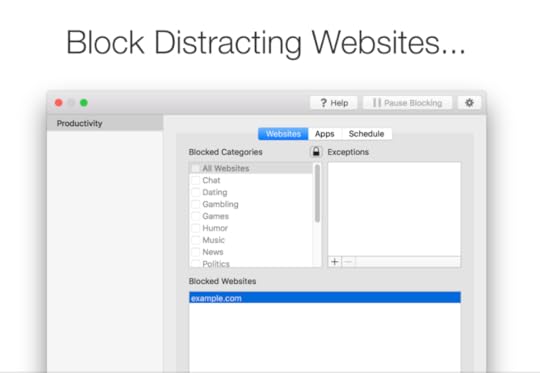
There’s a free version which gets you all of the basic features and the paid version is only $0.99/month if you want the ability to block sites by category, schedule recurring blocks and/or block all sites and apps that aren’t on your list of exceptions.
Features:
Website blocking: Block specific websites in Safari, Google Chrome and Opera.
Block apps: Block apps such as web browsers and games that are keeping you from working.
Time limits: Allow the use of blocked sites and apps for a limited amount of time.
Pause: Optional pause function for when you really need to use a blocked site or app.
Website categories: Block websites by category (pro version only).
Recurring blocks: Schedule recurring blocks – for example, Monday-Friday – for greater control (pro version only).
Exceptions: Block all websites and apps except for those you specify (pro version only).
Pricing: Free version, paid version $0.99/month
What do 1Focus users say?
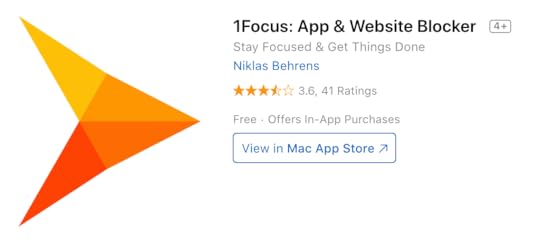
1Focus currently has a score of 3.6/5 from 41 reviews on iTunes and most of the feedback is good although some users seem to be confused about the functionality. Much of this appears to be user error, though.
“Everything I wanted and more! I have had this app since the beginning, and it has always been what I needed. Furthermore, the developer is one of the best individuals I have worked with. During one of the updates, he switched to every app was allowed except ones you chose; I wrote him asking for the original design, and he sent me the original software in an email to ensure I had the app I wanted. Talk about customer service.” – Fireflyfitness, 1Focus user
“Does what it says it does. I’ve noticed a trend with those leaving negative reviews – they are all from people who can’t seem to figure out basic concepts and simple software. This app is about as straight forward and easy to use as it gets, and does exactly what it says it does. It’s beautiful. It’s super light weight. And I like how when it blocks a website, it’ll take you to a page with a motivational quote of some kind about perseverance – which I thought was pretty cool. I’m currently working to finish my bachelor’s degree and this is the only thing that has actually helped me stay motivated and on task.” – Widemind, 1Focus user
You’ll find more feedback on iTunes and you can try the free version of 1Focus to see how you get on with the app yourself.
#10: Zero Willpower
Zero Willpower is about as straightforward as a website blocking app could be. You’re limited to Safari browser on iOS and you can’t block apps but this might give you the additional blocking you need in addition to one of the tools we’ve looked at that only work on laptops/desktops.

Features:
Website blocking: Block websites on iOS Safari browser.
Pricing: $1.99 one-off payment
What do Self Control users say?
 Zero Willpower has a score of 4.3/5 from 51 reviews on iTunes and most of the negativity revolves around the fact it’s only available for Safari browser.
Zero Willpower has a score of 4.3/5 from 51 reviews on iTunes and most of the negativity revolves around the fact it’s only available for Safari browser.
“Mmmm… a little bummed. I use Chrome on my phone and was hoping to get the website list blocked, but didn’t see the disclaimer at the bottom of the app description that this app on works for Safari. It works great for Safari, so the app gets 3 stars. But, since I paid $2 for this thing, it lost stars for not blocking sites on the superior web browser app.” – Ursalarose, Zero Willpower user
“Best and Unique Blocking Technique! So we know the app can block websites for 1-24 hours, which is how many other website blockers work. The genius part is that the websites stay blocked after the timer is up. The trick is that during the timer, you do not have the option to unblock websites, while after the timer, you have that option. It’s amazing how many distractions you avoid by having the websites be blocked by default!” – Zero Willpower user
How productive can you really be?
We’ve looked at tools that can block sites and apps across all of your devices and some that only work for desktop or mobile – both free and paid for every kind of budget. It might take some time to best tool/mix of tools for your workflow and preferences but I’m sure you can become a more productive person by trying out the apps in this article.
The only question remaining is how productive can you really be when all of the distractions are blocked out?
The post 10 Best Website & App Blockers to Block Facebook, Instagram & More appeared first on Venture Harbour.
December 17, 2018
25 Best SEO & Digital Marketing Agencies in 2019
Here at Venture Harbour, we empower marketers, entrepreneurs and brands to accelerate growth. While we’re not an SEO or marketing agency in the traditional sense, our focus is essentially on making these strategies more effective for agencies and business owners.
This means we work very closely with digital agencies, marketing professionals and entrepreneurs to help them solve problems.
In other words, we know a good agency when we see it but we also understand how difficult it can be to choose the right one for your business can be. So here’s a run-through of the top 25 and digital marketing agencies in the UK right now.
#1: Builtvisible

Builtvisible is a London-based agency that specialises in SEO, content marketing and building awareness. The company focuses on increasing visibility, turning more traffic into paying customers and improving performance with analytics and testing.
#2: engage

Leeds agency engage provides a comprehensive set of marketing services: web design and development, paid advertising, search optimisation, email marketing and social media. Clients include Heineken, Milwaukee, Jet2 and Yorkshire Tea.
#3: Fastfwd

Fastfwd is a digital marketing, design and development agency in Birmingham with a stunning collection of projects and an impressive list of clients. Ann Summers, Vogue, Miss Selfridge, Leica and QG are among the top brands who have turned to Fastfwd to help them create visually engaging campaigns and digital products.
#4: Electric Studio
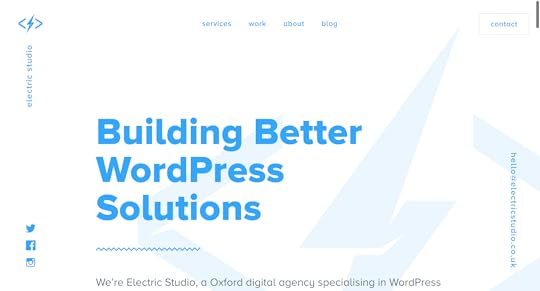
Electric Studio specialises in WordPress design and optimisation. The Oxford agency will help you design, build and optimise a WordPress website that performs in organic search and gives the rest of your digital strategies the best platform to work with.
#5: MOBO Media

MOBO Media is a design and marketing agency that offers web design, development, SEO and social media marketing – as well as branding, logo design and graphic design.
#6: Absolute

Absolute builds brands and digital campaigns for the likes of Manchester City FC, Royal Birkdale and Incorez with a mix of digital media (content, photography and video) as well as website and app design and development with a heavy emphasis on user experience.
#7: BowlerHat

BolwerHat likes to make digital marketing simpler with a straightforward set of SEO, PPC, content marketing and design services. The Birmingham agency specialises in working with small businesses to help them hit bigger targets.
#8: Impression

Award-winning Impression is all about maximising brand exposure to generate more leads and then maximising conversions with data-driven testing and optimisation. The Nottingham agency provides SEO, PPC, digital PR, content marketing, conversion rate optimisation (CRO) and web design services.
#9: Glass Digital
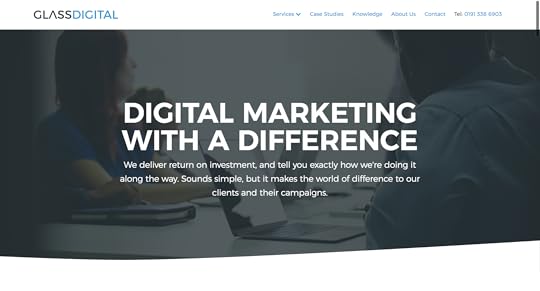
With Glass Digital, the emphasis is all on transparency and making sure you understand how your marketing strategies are generating that all-important return on investment. The Newcastle agency offers a flexible combination of organic search, paid search and affiliate marketing services for SMEs.
#10: Edit

Formerly Branded3, Edit may have rebranded itself but it still remains one of the most respected digital agencies in the UK, helping brands like Jaguar Land Rover, Confused.com and Ladbrokes make big things happen. The agency specialises in data-driven marketing, media branding and customer relationship management for enterprise brands.
#11: Traffic

Traffic is an award-winning marketing and digital agency based in Birmingham that uses the latest technology to build great businesses and brands. Traffic works with brands across a wide range of industries, including the health sector, construction and the automotive business.
#12: addmustard

addmustard is a digital marketing agency designed for entrepreneurs, offering SEO, paid media, social media marketing, UX web and app design, branding and performance optimisation.
#13: Epiphany

Epiphany is an award-winning search agency that specialises in getting brands seen by the right target audiences. It combines SEO, PPC, display advertising, content marketing and web design/development for clients including The Carphone Warehouse, Pretty Little Things, Pandora, SCS and Ladbrokes.
#14: Koozai

Koozai is a well-known, trusted and award-winning digital agency that breaks down its services in owned media (SEO and content marketing), earned media (digital PR) and paid media (paid search and social). Clients include TravelBag, V&A, Papa Johns and TUI Travel Plc.
#15: Barques

Barques is one of the UK’s leading web design agencies that houses a team of SEO specialists to design and optimise websites for the best possible performance in search.
#16: Distilled

Distilled is a digital marketing agency based in London (as well as Seattle and New York), offering organic search, content marketing, conversion rate optimisation, video marketing and consultancy services for leading brands.
#17: Ayima

Ayima is an all-in-one agency that works with the likes of Bwin, M&S and Verizon to help them build a larger customer base through digital strategies. It provides SEO, PPC, paid social, content marketing, performance analytics, CRO, programmatic advertising and a range of eCommerce services for brands across all industries.
#18: Epic New Media

Epic New Media is a specialist SEO and PPC agency based in Manchester and Liverpool. Aside from organic and paid search marketing, Epic also offers paid social, landing page design, CRO and analytics services.
#19: Barracuda

Barracuda is another UK digital agency that breaks down its services into earned, paid and owned. It offers SEO, local SEO, digital PR and outreach on the earned side of things, plus PCC, display and remarketing, paid social, Google Shopping and YouTube advertising on the paid front. Then you have its earned services: conversion rate optimisation, web development, content strategy and video production.
#20: Croud

Croud is an international marketing agency based in London with offices in New York and Surry Hills (Australia). The agency works with an in-house team and a large network of freelancers to provide SEO, PPC, content, paid social and a range of other services for brands around the world.
#21: Blueglass

Blueglass works with international brands including Huawei, UPC, Swisscom, Just East and Fielmann. The agency specialises in SEO, content marketing, paid advertising and WordPress development – winner of the EU Search Award in 2015, 2017 and 2018 (among other awards).
#22: Gravitywell

Bristol agency Gravitywell aims to provide the full digital package for its clients, offering design and development services for websites, eCommerce platforms, mobile apps, react native apps, messenger bots and just about anything else modern brands need – plus branding and marketing services to help your business grow.
#23: Directive

Directive is one of the UK’s leading digital agencies, working with the likes of Cisco, Samsung, Allstate, Cherwell and WestRock. It combines SEO, PPC, content marketing, paid social and CRO services to help major brands increase their audiences and turn them into larger customer bases.
#24: Momentum

Momentum is a user-focused digital agency that offers comprehensive research, design, strategy and development services. The company doesn’t work in terms of separating strategies like SEO and PPC but focuses on finding the right combination of these interlocked marketing channels to achieve your business goals faster.
#25: Site Visibility

Site Visibility offers SEO, PPC, display advertising, online PR, social media marketing, analytics and content marketing services for brands looking to take that next step. The London-based agency has worked with the likes of Hilton, Nivea and UK Power Networks.
The best are only getting better
The best SEO and digital marketing agencies are only getting better as they employ the latest technologies to their strategies – particularly when it comes to automation. In many ways, it’s never been a better time to choose an agency to work and there are hundreds of quality UK agencies that didn’t make this list.
However, you can use these top 25 agencies as a template to compare other agencies against and find the right agency for your business.
The post 25 Best SEO & Digital Marketing Agencies in 2019 appeared first on Venture Harbour.
November 29, 2018
15 Ways to Improve Email Deliverability & Open Rates
According to McKinsey&Company, email marketing is 40 times more effective than social media and marketers still rate this strategy as the most effective, according to Smart Insights research on the State of Email marketing in 2017.

Source: Smart Insights
Now, creating a killer email marketing strategy can take time and one of your biggest challenges is maximising deliverability and open rates. You’re simply not going to get results if your emails aren’t landing in people’s inboxes and things aren’t much better if they do, but nobody opens them.
In fact, low deliverability and open rates are two of the biggest signals to internet service providers (ISPs) that you’re sending low-quality emails, which can leave you in a nasty cycle of ending up in the spam folder.
To help you avoid this, here are fifteen ways to improve email deliverability and open rates.
#1: Use a dedicated IP – and take care of it
The reputation of your email IP address and website domain are crucial when it comes to maximising deliverability. Mailbox providers such as Gmail and Outlook want to stop their users being bombarded by spam and crapy mails, using algorithms to filter and block mails that pose a risk or fill up their inbox with junk.
Your domain reputation relates to your web address and this is just as (or more) important than your email IP address, depending on the algorithm of each provider.
In terms of your email IP address, the first thing you need to do is make sure you have a dedicated IP, not a shared address. You don’t other people’s poor email strategies holding back your own so it’s worth taking the time to build and maintain a positive reputation on your own dedicated IP address.
#2: Build your own email lists
I’m not here to tell you that buying email lists is bad or ineffective (it certainly worked for Airbnb) but you’re never going to maximise deliverability or open rates with this approach. You may even end up in hot water with the authorities or regulators – unless you become a major startup success and all is forgiven, of course.
Nope, to get the best delivery and open rates, you’re going to have to do this the old-fashioned way, bu building your own email list comprising of people who actually signed up to receive your mails.
#3: Test your emails for spam scores
Before you send out any new email campaign, it’s a good idea to check your mails to get a spam rating. This will grade how likely your emails are to get flagged up by the spam filters and highlight any keywords you’re using that act as red flags.
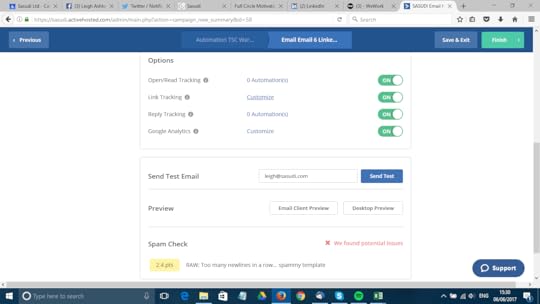
There are plenty of dedicated email spam score tools but there should also be one included in your email marketing platform. We use ActiveCampaign, which automatically runs a spam check on every campaign you create, scanning the content of your emails for any potential problems.
#4: Test deliverability with seed accounts
Once you’ve tested and sent out your emails, you’ll want to make sure they’re getting through to each mailbox provider. Create accounts with Gmail, Outlook, Yahoo and every other provider you want to test for and make sure they’re getting through.
This isn’t a comprehensive test, of course, but it gives you a good idea that there are no obvious problems preventing your mails from getting through to these inboxes. Just make sure you open the mails after receiving them so you don’t add any negative juice to your open rates.
#5: Segment leads on your website
When it comes to open rates, relevance is everything and generic emails are always at risk of being ignored. You need to capture people’s interest in a single subject line and this can be particularly difficult for the first few emails when you don’t know enough about users to target them with more specific messages.
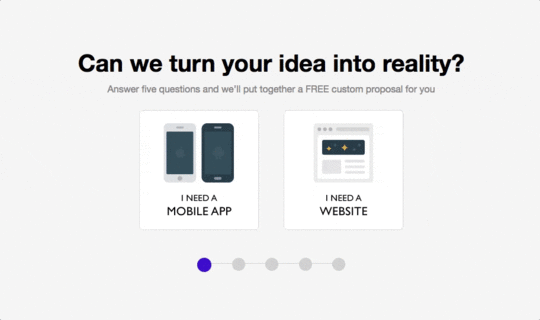
The thing is, you can find out enough about these users before they even hit the submit button on your email signup form. We use Leadformly to create multi-step forms using conditional logic that allows us to get more detailed information about what each user needs from us and this allows us to be highly relative from the very first email we send them.
Best of all, we can automate this process with ActiveCampaign so we’re sending out highly-relevant emails without having to manually select which message to send.
#6: Implement double opt-in
A double opt-in campaign simply sends users a confirmation email after they’ve submitted their details and they’re not added to your list until they click the confirmation link in your mail.
First of all, this confirms the email address you’ve received is valid and active but it also increases the quality of leads on your list because they’ve already engaged with you after the signup process. This shouldn’t add any unnecessary friction either, if you’re segmenting your lists on the page via Leadformly and your email automation platform.

Once again, you can automate all of this with an email marketing platform like ActiveCampaign.
#7: Keep on top of hard bounces
A hard bounce is when an email is sent to an email address that is no longer active or simply doesn’t exist. Rack up too many of these hard bounces and all of the major ISPs will start to suppress the delivery of your mails.
This is one reason why double opt-ins are so important but you’ll also want to keep on top of hard bounces because an email account can be closed at any time. ideally, you want to stop sending emails to these addresses as soon as you detect a problem to prevent your IP reputation being damaged.
A small number of hard bounces isn’t going to kill your email marketing strategy but this is something you definitely want to manage.
#8: Keep on top of repeated soft bounces
A soft bounce is when an email message is sent to an account that is full or temporarily unavailable for whatever reason – eg: their server is down. These are significantly less damaging than hard bounces but it’s still worth keeping on top of these and removing contacts that result in multiple soft bounces.
#9: Set a cut-off limit for no-openers
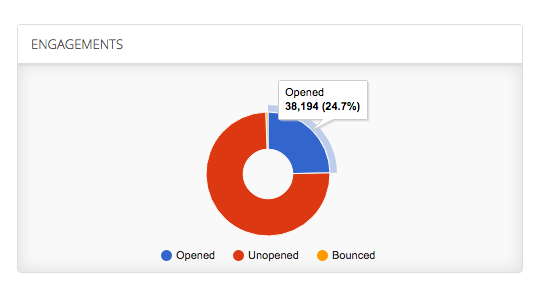
Sometimes, your mails will get through to people but you simply won’t get any opens from this contact for an extended period of time. Unfortunately, this is gradually doing damage to your reputation with ISPs and you have to choose a cut-off point where you say enough is enough.
Whether you decide it’s a year, six months or less (it may vary by each campaign), choose your cut-off point because a few hundred of these users collectively can become a problem.
#10: Avoid spam traps
Spam traps are email addresses used by ISPs and blacklisters to identify spam emailers and having your mails land in one of these accounts can really hurt your sender score. The problem is, these can look just like any other email address and, in some cases, contacts you legitimately added to your email list could turn into spam traps in the future.
Nasty stuff.
The most common type of spam trap is accounts that have never been used by anyone and these are normally found on bout email lists. Because these accounts are inactive, they can’t opt-in to anything so you can avoid these relatively easily by not buying email lists and having the proper opt-in process in place.
However, ISPs and blacklisters also take over inactive email addresses that haven’t been used for a long period (normally 18 months) and this means contacts on your list could also turn into spam traps. Which is why it’s important to remove contacts that haven’t show any activity for extended periods of time.
#11: Test your email subject lines
As mentioned earlier, you only have one subject line to convince people to open your emails (assuming they see them to begin with). Which means you’re going to want to test these to improve results, pinpoint issues and learn from your successes/failures over time.

This is something you’ll want to look out for in any email marketing platform you use – the ability to A/B test subject lines (among other things).
#12: Never include attachments
Emails with attachments in them a major red flag for spam – just don’t do it. If you want to send something like a PDF or a video to your recipients, include a link pointing to the resource instead – or an image link in the case of a video.
#13: Don’t use IP addresses for links
Speaking of links, anytime you’re going to include one in your emails, make sure you never use IP addresses – eg: http://193.241.33.1/page/.
It’s unlikely you’re ever going to do this but IP address links are commonly used by phishers and spammers and this is another red flag. Pay attention to any links for third-party resources you link to in your emails to make sure they’re also not IP addresses.
#14: Use a reputable email platform
Another important tip for maintaining a good reputation with ISPs is to use reputable email marketing platforms. We recommend sticking to professional tools such as ActiveCampaign, SendinBlue or HubSpot that are typically used by reputable businesses for genuine email marketing purposes.
Take a look at our list of the best email marketing platforms if you need any help with choosing the right tool your business.
#15: Act on poor performing campaigns
Finally, make sure your act on email campaigns that aren’t achieving the right level of deliverability or open rates. Don’t let performance continue to slide because this can damage your reputation and hurt future performance.
As soon as you detect any issues, test variations and compare results to try and pinpoint the cause of problems. Start with your subject lines if open rates are the problem and reassess your content if you’re having deliverability issues.
Above all, maintain your contact lists and make sure you’re not being held back by hard bounces, spam traps and other performance killers.
Take your email marketing efforts to the next level
If you need any more tips on making more of your email marketing efforts, take a look at our guide to automated evergreen webinars – you won’t be disappointed.
The post 15 Ways to Improve Email Deliverability & Open Rates appeared first on Venture Harbour.
November 24, 2018
10 Best CRO & Landing Page Optimisation Agencies in 2019
With so many conversion rate optimisation (CRO) tools available today, it’s easy to think anyone can pick up the latest software and transform their business. However, as with any trade, the right tools in the wrong hands can cause all kinds of damage and it takes more than a bit of software to run a successful CRO strategy.
In fact, conversion rate optimisation is a lot more complex than the software providers like to tell you and achieving things like statistical significance can be a real challenge (without it, your tests are useless).
Luckily, this is why CRO agencies exist – to take care of the technical side of conversion rate optimisation so you can get back to doing what you do best while your business turns more traffic into solid leads and paying customers.
In this article, we’re looking at the best CRO and landing page optimisation agencies in the UK that will help you make the most of your existing traffic.
#1: Conversion Rate Experts: The UK’s elite CRO agency

Conversion Rate Experts is one of the most experienced and trusted CRO specialists in the UK. With offices in London’s Regent Street, New York’s Park Avenue and Hawkesyard Hall in Staffordshire, it’s list of real estate is almost as impressive as its list of clients.
This is also the only agency in our list to have won the Queen’s Award for Enterprise for innovation – or, more specifically, “codifying the scientific methodology that companies like Google, Facebook and Apple now use to improve websites.”
As you can probably guess by this stage, Conversion Rate Experts is a CRO agency for high-end brands and the company makes a point of saying only works with companies generating over $250,000 annually.
#2: PRWD: Data-driven CRO for large businesses

PRWD is a Manchester-based digital agency that specialises in conversion rate optimisation, user research, user-centred design and all things data. That’s a good mix, considering you need all of those things to run meaningful CRO tests and implement design changes that make a positive impact.
PRWD is a relatively old name in this industry, founded all the way back in 2004 but founder Paul Rouke was quick to recognise the importance of optimising websites for performance.
The company uses enterprise CRO platforms, including Optimizely, VWO, AB Tasty, Adobe Target and Qubit to test and implement design changes that will turn more of your traffic into valuable leads.
Now, PRWD is one of the most highly-rated CRO agencies in the UK, mostly dealing with large enterprise businesses – although it’s definitely more approachable than Conversion Rate Experts for startups with financial backing and ventures with plenty of promise.
#3: Conversion: CRO with rapid business growth in mind

Conversion is a modern CRO agency but it was still one of the first “pure” conversion optimisation agencies that focuses specifically on optimising websites for better results. Founded in 2007 by Stephen Pavlovich, Conversion has evolved from a one-man venture into an award-winning CRO agency, being named as a Deloitte Fast 50 winner in 2015, recognising it as one of the fastest-growing tech companies in the UK.
In other words, Conversion is all about one thing: growth. And this is one agency rapidly scales its own business by rapidly scaling the growth of others and that’s pretty much the key thing you want from a CRO agency.
The other great things about Conversion’s rapid growth model is that it’s ready and willing to work with SMEs and help them take that all-important next step.
#4: Freshegg: User-centred conversion optimisation
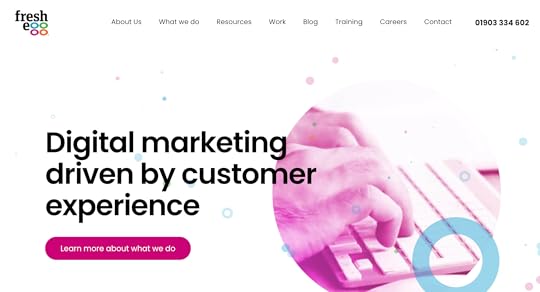
Freshegg may sound like a recent startup venture but it’s actually one of the UK’s oldest CRO agencies (founded in 2000) and it’s still winning awards in 2018. The company’s ethos is that the customer experience is everything when it comes to conversion optimisation and it’s no surprise Freshegg works with some of the biggest B2C brands around, including Helly Hansen, John Lewis and Bacardi.
However, Freshegg also works with B2B brands and public services such as the NHS and the Open University, winning awards all over the place.
#5: Impression: The award-winning all-in-one marketing agency

Speaking of award winners, Impression is a constant presence at the awards ceremonies and a regular winner, too. This is the first company on our list that isn’t a dedicated CRO agency, instead offering the all-inclusive package of marketing services: SEO, PPC, PR, content marketing, CRO and web design.
#6: Tangent: Visual experiences that get results

Tangent is all about designing experiences and you can see this from the moment you land on the agency’s website. The visual power Tangent’s projects is obvious to see but the company doesn’t sacrifice function for the sake of form. Tangent builds visually compelling and engaging experiences that get results and continue to get better results, the longer you work with the agency.
Tangent’s list of clients includes the likes of Citroën, Sky, Microsoft, Deutsche Bank, Pepsico, Peugeot and other Freesat. So you’re in good company if you need one of the country’s best agencies for designing and optimising rich user experiences.
#7: Click Consult

Click Consult is another all-in-one agency that provides SEO, paid search, social media and a range of marketing services. However, it takes conversion optimisation very seriously and this is one agency that works with clients of almost every size, making Click Consult a great option for SMEs who want the full marketing package.
The company essentially uses the same tools we regularly recommend for conversion optimisation (WVO, Google Analytics, etc,) and combines them into a single workflow to test variations, collect data, optimise your pages and get user feedback.
#8: Evo Media

Evo Media is a B2B lead generation specialist and its conversion optimisation services are designed to help you turn more interactions into qualified leads. Evo Media is based in Liverpool and it’s on a mission to help SME B2B brands in the UK build their way to bigger things.
The company works with the likes of Telecoms Cloud, Access Commercial Finance and Viewpoint AV, which shows a heavy emphasis on tech companies that often struggle with creating experiences that maximise conversion potential.
#9: Adaptable
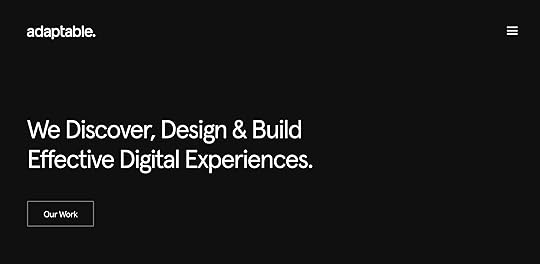
Adaptable is another agency with a heavy emphasis on user experience but this company has a particular flair for mobile and eCommerce platforms – two niches that can be frustratingly difficult to find agencies for.
Adaptable has helped National Express transform its website and mobile app, Dr Martens create an online experience worthy of the 21st century and helped a number of mobile and retail startups make their business visions a reality.
It also helped the city of Birmingham redevelop its Shopping in Birmingham app to create a mobile experience that helps people find shops, hotels, restaurants, parking and just about everything they could possibly need for a trip to the UK city, which is undergoing something of a rapid redevelopment itself.
#10: Distinction

Distinction was founded in 2001, which makes it one of the old guard if you look at age alone. However, the company has kept itself at the forefront of design, development and marketing processes for almost two decades and, even now, it looks like a fresh startup bustling with new ideas.
The only difference is these new ideas are backed up by 17 years of experience and constant innovation.
Today, Distinction is a true all-in-one design and marketing agency but it still seems to love working with new and exciting business ideas rather than playing it safe with traditional industries. So, if you’re a startup or a business with something groundbreaking to offer, there’s a good chance Distinction is going to be as exciting about your ideas as you are.
Here’s what Distinction has to say about its CRO services:
Here at Distinction, we don’t simply optimise for individual click and conversion rates. We analyse the entirety of your website so that every visitor, at every stage in the buyer’s journey, has a seamless user experience and an intuitive conversion path to follow.
This is great to hear because one of the biggest mistakes marketers make is only optimising for conversion rates when there are other goals that might be more important – eg: lead quality, cost-per-acquisition, etc.
Distinction understands this and it’s also able to offer just about everything you need from a marketing agency in a single integrated service.
Have you worked with any of these agencies?
If you’ve worked with any of these agencies or another agency you feel should be included on this list, let me know. I’d be interested to hear about your experiences.
The post 10 Best CRO & Landing Page Optimisation Agencies in 2019 appeared first on Venture Harbour.
10 Best CRO & Landing Page Optimisation Agencies in 2018
With so many conversion rate optimisation (CRO) tools available today, it’s easy to think anyone can pick up the latest software and transform their business. However, as with any trade, the right tools in the wrong hands can cause all kinds of damage and it takes more than a bit of software to run a successful CRO strategy.
In fact, conversion rate optimisation is a lot more complex than the software providers like to tell you and achieving things like statistical significance can be a real challenge (without it, your tests are useless).
Luckily, this is why CRO agencies exist – to take care of the technical side of conversion rate optimisation so you can get back to doing what you do best while your business turns more traffic into solid leads and paying customers.
In this article, we’re looking at the best CRO and landing page optimisation agencies in the UK that will help you make the most of your existing traffic.
#1: Conversion Rate Experts: The UK’s elite CRO agency

Conversion Rate Experts is one of the most experienced and trusted CRO specialists in the UK. With offices in London’s Regent Street, New York’s Park Avenue and Hawkesyard Hall in Staffordshire, it’s list of real estate is almost as impressive as its list of clients.
This is also the only agency in our list to have won the Queen’s Award for Enterprise for innovation – or, more specifically, “codifying the scientific methodology that companies like Google, Facebook and Apple now use to improve websites.”
As you can probably guess by this stage, Conversion Rate Experts is a CRO agency for high-end brands and the company makes a point of saying only works with companies generating over $250,000 annually.
#2: PRWD: Data-driven CRO for large businesses

PRWD is a Manchester-based digital agency that specialises in conversion rate optimisation, user research, user-centred design and all things data. That’s a good mix, considering you need all of those things to run meaningful CRO tests and implement design changes that make a positive impact.
PRWD is a relatively old name in this industry, founded all the way back in 2004 but founder Paul Rouke was quick to recognise the importance of optimising websites for performance.
The company uses enterprise CRO platforms, including Optimizely, VWO, AB Tasty, Adobe Target and Qubit to test and implement design changes that will turn more of your traffic into valuable leads.
Now, PRWD is one of the most highly-rated CRO agencies in the UK, mostly dealing with large enterprise businesses – although it’s definitely more approachable than Conversion Rate Experts for startups with financial backing and ventures with plenty of promise.
#3: Conversion: CRO with rapid business growth in mind

Conversion is a modern CRO agency but it was still one of the first “pure” conversion optimisation agencies that focuses specifically on optimising websites for better results. Founded in 2007 by Stephen Pavlovich, Conversion has evolved from a one-man venture into an award-winning CRO agency, being named as a Deloitte Fast 50 winner in 2015, recognising it as one of the fastest-growing tech companies in the UK.
In other words, Conversion is all about one thing: growth. And this is one agency rapidly scales its own business by rapidly scaling the growth of others and that’s pretty much the key thing you want from a CRO agency.
The other great things about Conversion’s rapid growth model is that it’s ready and willing to work with SMEs and help them take that all-important next step.
#4: Freshegg: User-centred conversion optimisation

Freshegg may sound like a recent startup venture but it’s actually one of the UK’s oldest CRO agencies (founded in 2000) and it’s still winning awards in 2018. The company’s ethos is that the customer experience is everything when it comes to conversion optimisation and it’s no surprise Freshegg works with some of the biggest B2C brands around, including Helly Hansen, John Lewis and Bacardi.
However, Freshegg also works with B2B brands and public services such as the NHS and the Open University, winning awards all over the place.
#5: Impression: The award-winning all-in-one marketing agency

Speaking of award winners, Impression is a constant presence at the awards ceremonies and a regular winner, too. This is the first company on our list that isn’t a dedicated CRO agency, instead offering the all-inclusive package of marketing services: SEO, PPC, PR, content marketing, CRO and web design.
#6: Tangent: Visual experiences that get results

Tangent is all about designing experiences and you can see this from the moment you land on the agency’s website. The visual power Tangent’s projects is obvious to see but the company doesn’t sacrifice function for the sake of form. Tangent builds visually compelling and engaging experiences that get results and continue to get better results, the longer you work with the agency.
Tangent’s list of clients includes the likes of Citroën, Sky, Microsoft, Deutsche Bank, Pepsico, Peugeot and other Freesat. So you’re in good company if you need one of the country’s best agencies for designing and optimising rich user experiences.
#7: Click Consult

Click Consult is another all-in-one agency that provides SEO, paid search, social media and a range of marketing services. However, it takes conversion optimisation very seriously and this is one agency that works with clients of almost every size, making Click Consult a great option for SMEs who want the full marketing package.
The company essentially uses the same tools we regularly recommend for conversion optimisation (WVO, Google Analytics, etc,) and combines them into a single workflow to test variations, collect data, optimise your pages and get user feedback.
#8: Evo Media

Evo Media is a B2B lead generation specialist and its conversion optimisation services are designed to help you turn more interactions into qualified leads. Evo Media is based in Liverpool and it’s on a mission to help SME B2B brands in the UK build their way to bigger things.
The company works with the likes of Telecoms Cloud, Access Commercial Finance and Viewpoint AV, which shows a heavy emphasis on tech companies that often struggle with creating experiences that maximise conversion potential.
#9: Adaptable

Adaptable is another agency with a heavy emphasis on user experience but this company has a particular flair for mobile and eCommerce platforms – two niches that can be frustratingly difficult to find agencies for.
Adaptable has helped National Express transform its website and mobile app, Dr Martens create an online experience worthy of the 21st century and helped a number of mobile and retail startups make their business visions a reality.
It also helped the city of Birmingham redevelop its Shopping in Birmingham app to create a mobile experience that helps people find shops, hotels, restaurants, parking and just about everything they could possibly need for a trip to the UK city, which is undergoing something of a rapid redevelopment itself.
#10: Distinction

Distinction was founded in 2001, which makes it one of the old guard if you look at age alone. However, the company has kept itself at the forefront of design, development and marketing processes for almost two decades and, even now, it looks like a fresh startup bustling with new ideas.
The only difference is these new ideas are backed up by 17 years of experience and constant innovation.
Today, Distinction is a true all-in-one design and marketing agency but it still seems to love working with new and exciting business ideas rather than playing it safe with traditional industries. So, if you’re a startup or a business with something groundbreaking to offer, there’s a good chance Distinction is going to be as exciting about your ideas as you are.
Here’s what Distinction has to say about its CRO services:
Here at Distinction, we don’t simply optimise for individual click and conversion rates. We analyse the entirety of your website so that every visitor, at every stage in the buyer’s journey, has a seamless user experience and an intuitive conversion path to follow.
This is great to hear because one of the biggest mistakes marketers make is only optimising for conversion rates when there are other goals that might be more important – eg: lead quality, cost-per-acquisition, etc.
Distinction understands this and it’s also able to offer just about everything you need from a marketing agency in a single integrated service.
Have you worked with any of these agencies?
If you’ve worked with any of these agencies or another agency you feel should be included on this list, let me know. I’d be interested to hear about your experiences.
The post 10 Best CRO & Landing Page Optimisation Agencies in 2018 appeared first on Venture Harbour.



